The Q6 series from Samsung is the simplest line of QLED televisions from the Koreans for 2024. It stands out for its ease of use and several handy features. Thanks to the Tizen system found in the Q60D, we can easily switch between apps like Netflix and Prime Video, and everything runs quickly and smoothly. Using it doesn't require any special preparation – everything is intuitive. One of the cooler additions is the solar remote. It not only eliminates the need for battery changes but also allows you to control other devices, such as a decoder. This means you don't have to keep multiple remotes handy, which will be appreciated by anyone who values order in their living room. In terms of picture quality, the television performs really well in its class. The contrast is high enough that the image looks sharp even during darker scenes. In bright rooms, the TV handles itself without major issues – the screen is bright enough for the image to be clear during the day. Of course, the lack of Dolby Vision might be noticeable with HDR materials, but HDR10+ support is still a good alternative, especially at this price. The Q60D is also a good choice if you occasionally game on a console. Low input lag means the image reacts quickly to our actions, which is great for both dynamic action games and sports. The Game Bar feature is a simple way to quickly adjust settings without leaving the game, which will definitely be useful for many people. The design of the Q60D also scores points – its slim design looks good in the living room, doesn't take up much space and easily fits into various interior styles. In summary: This is certainly not a device that aspires to be the best television of all time, but it is definitely a model that is worth its relatively low price.
- Matching (Score)
- Our verdict
- TV appearance
- Where to buy
- Contrast and black detail
- HDR effect quality
- Factory color reproduction
- Color reproduction after calibration
- Smoothness of tonal transitions
- Image scaling and smoothness of tonal transitions
- Blur and motion smoothness
- Console compatibility and gaming features
- Input lag
- Compatibility with PC
- Viewing angles
- TV efficiency during daytime
- Details about the matrix
- TV features
- Apps
- Playing files from USB
- Sound
Samsung Q60D / Q67D / Q68D vs Philips PUS8500
Direct compare
Q60D / Q67D / Q68D
PUS8500 / PUS8560 / PUS8510 / PUS8600

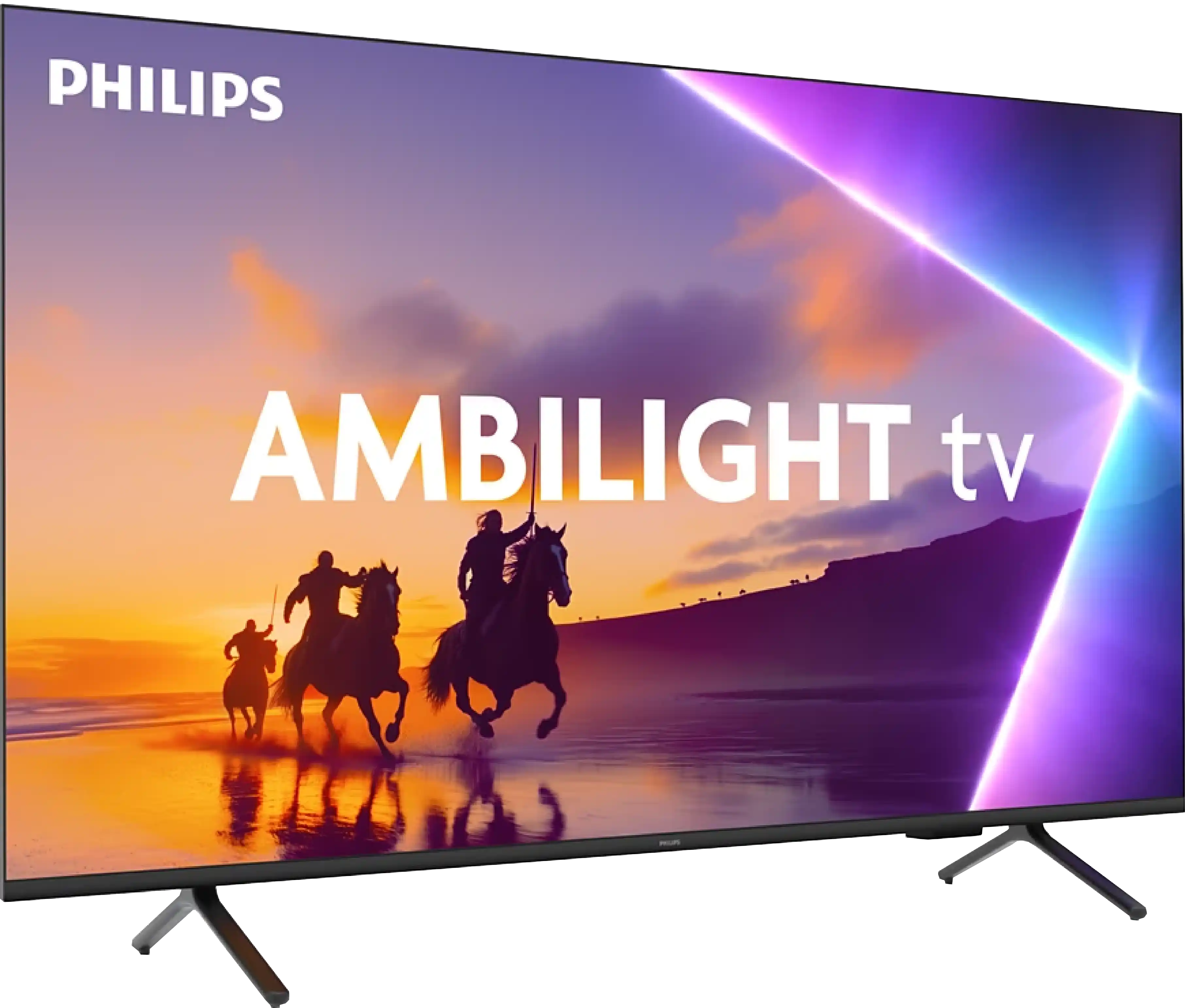
Panel type: LCD VA
Resolution: 3840x2160
System: Tizen
Model year: 2024
Complete the survey to find out the result

Panel type: LCD VA
Resolution: 3840x2160
System: Titan OS
Model year: 2025
Complete the survey to find out the result

Overall rating
6.3
5.6
Movies and series in UHD quality
6.3
5.4
Classic TV, YouTube
6.0
6.1
Sports broadcasts (TV and apps)
5.2
5.2
Gaming on console
7.0
6.7
TV as a computer monitor
6.0
5.6
Watching in bright light
6.0
4.9
Utility functions
7.3
4.9
Apps
8.7
4.6
Sound quality
6.2
6.2
Complete the survey to find out what fits your preferences
Advantages
High native contrast
Handles sunny days well
Easy-to-use Tizen operating system
Low input lag
Interesting choice for casual gamers
Ambilight System
High native contrast - VA panel
Low input lag
Essential features for gamers: ALLM and VRR
Full support for audio formats: Dolby Atmos and DTS
Backlit remote with numerical keypad
Disadvantages
No Dolby Vision
No recording support
Will not play sound in DTS format
Average panel brightness
The TitanOS system feels unfinished (some features don't work, gaps in applications)
Infrared remote control
Font readability issues (PC)
Our verdict
Ambilight because that's exactly where we need to start, it's the biggest reason to buy the PUS8500. The three-sided backlighting on the TV looks fantastic, especially in the evening. It creates atmosphere, masks contrast imperfections, and makes viewing simply more enjoyable. Even if the black isn’t perfect here, at high contrast the native VA panel is just good. On top of that, there’s really decent input lag and several gaming features like ALLM and VRR. Although there’s no HDMI 2.1 or 120Hz panel, casual gaming should be a pleasure. Especially since it plays responsively and without delays. Let’s add full support for audio formats – it includes both Dolby Atmos and DTS, so soundbar owners also have something to be happy about.
But let’s not kid ourselves – this is still a budget TV, and at times that’s quite obvious. Brightness is average – not so weak that you can't watch anything, but if you hit an exceptionally sunny day, watching under such conditions without blinds can be problematic. However, in our opinion, the biggest disappointment with the PUS8560 is the Titan OS operating system. Despite the fact that the system debuted some time ago, some things just didn’t work – for example, screen mirroring from a phone despite the manufacturer stating that this feature is present. There are fewer apps than the competition, and the system itself feels a bit clunky. Generally, it seems to do something already, but it clearly lacks refinement.
Of course, this isn’t a TV meant to compete with top models. But if someone is looking for something simple, with the cool atmosphere that the Ambilight system provides, it’s quite a fair proposition. You just need to know what to expect and accept the compromises, of which there are plenty here.
TV appearance




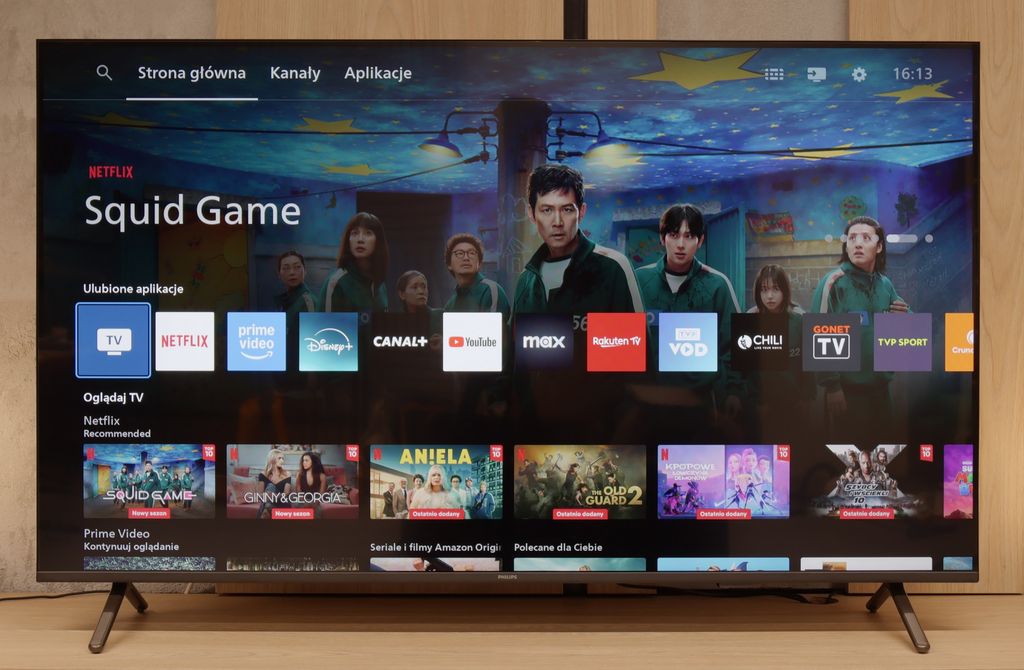
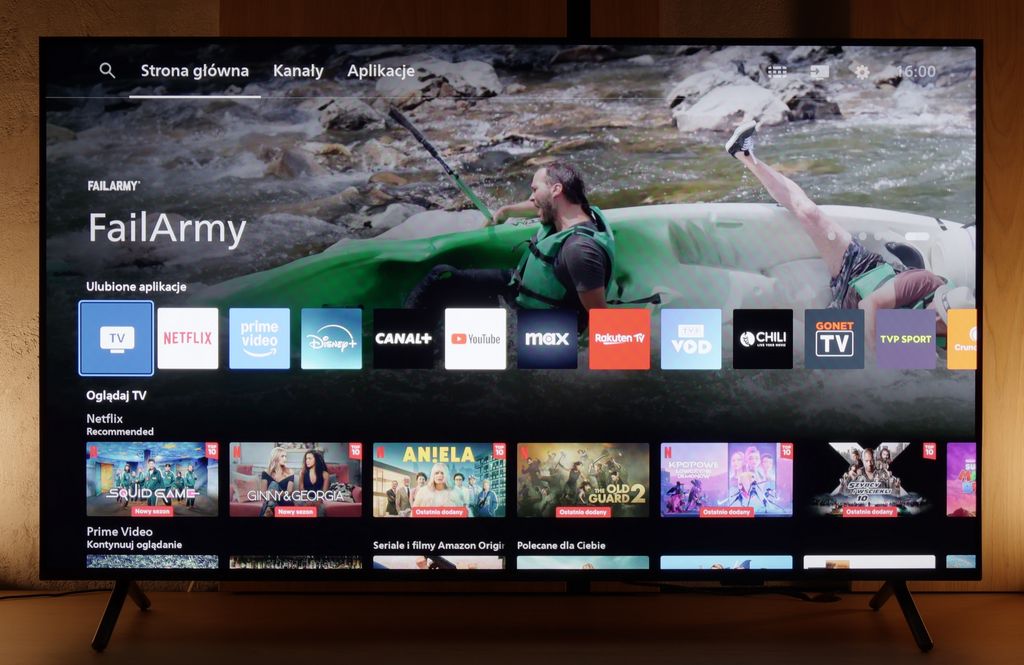
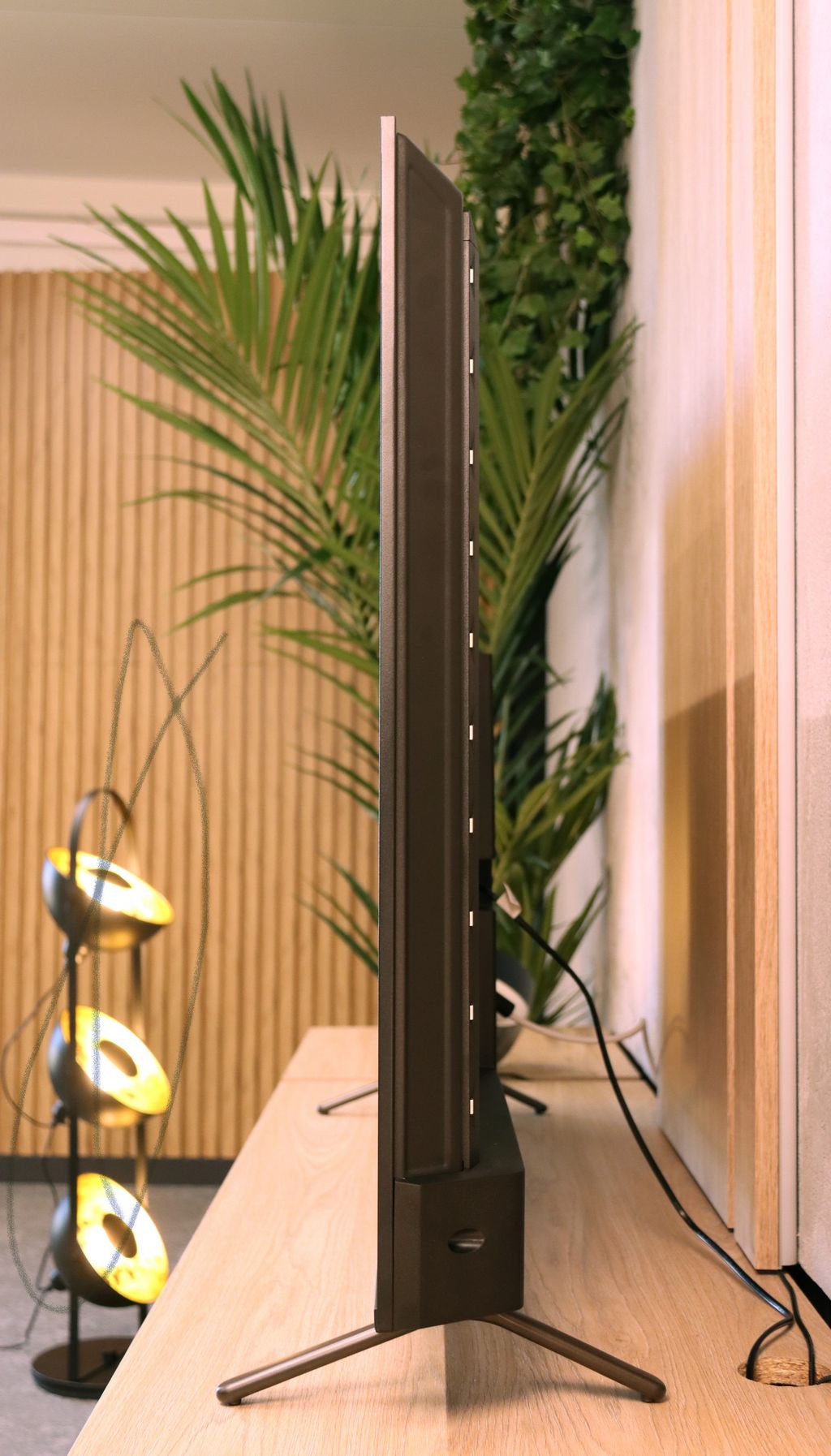
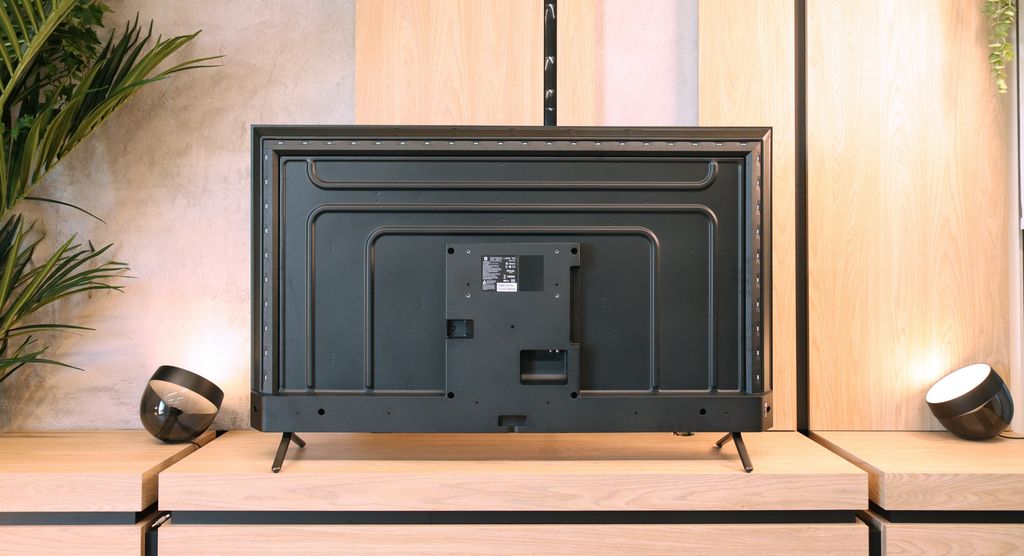
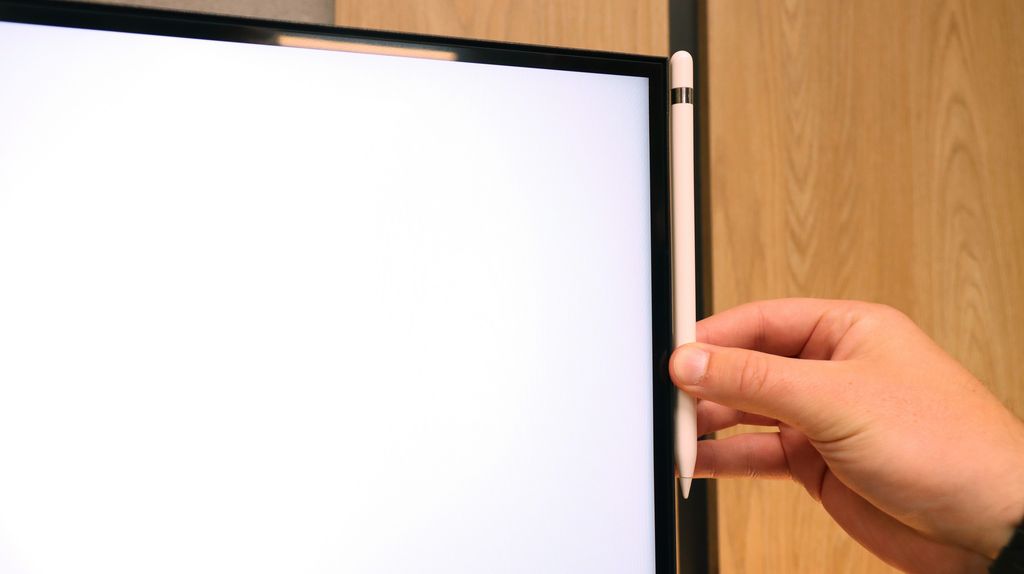
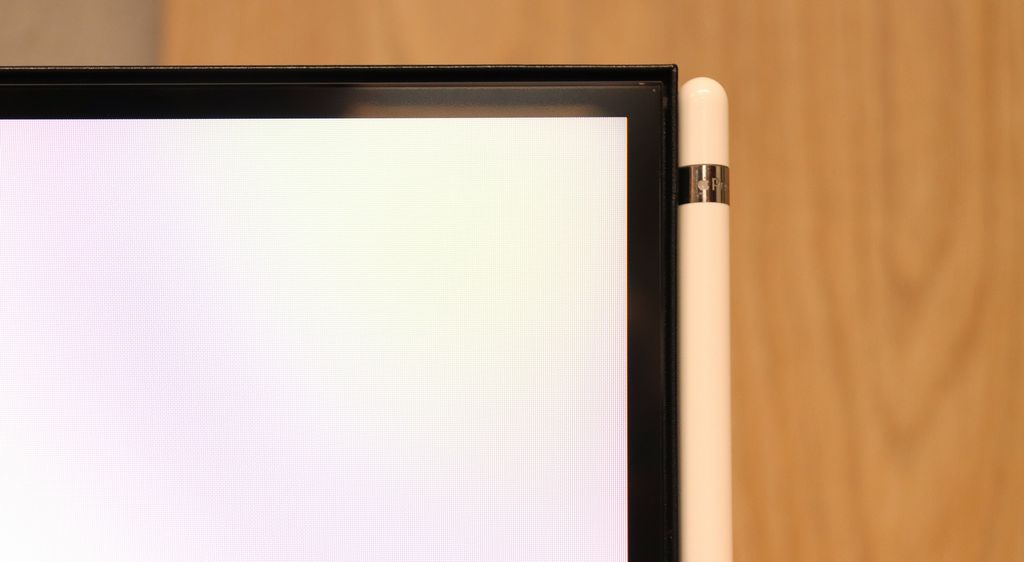

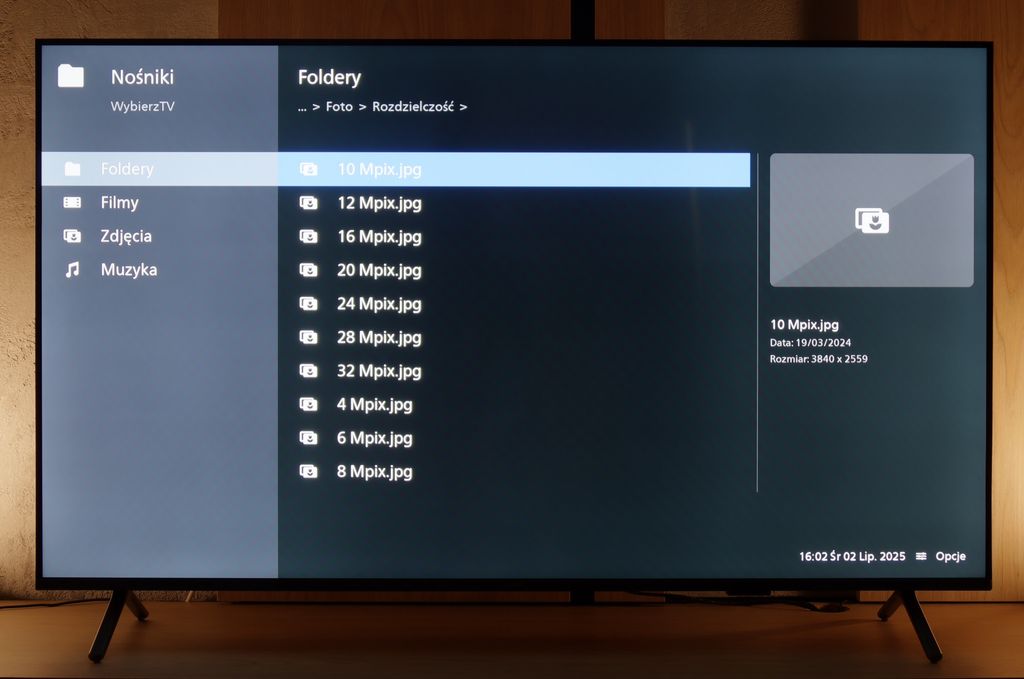
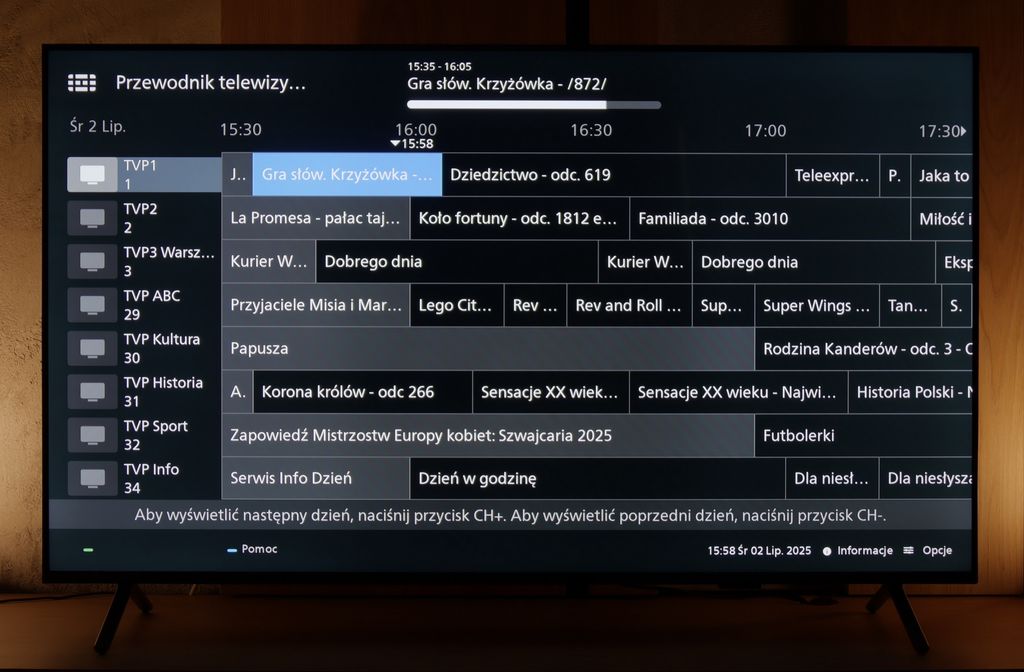
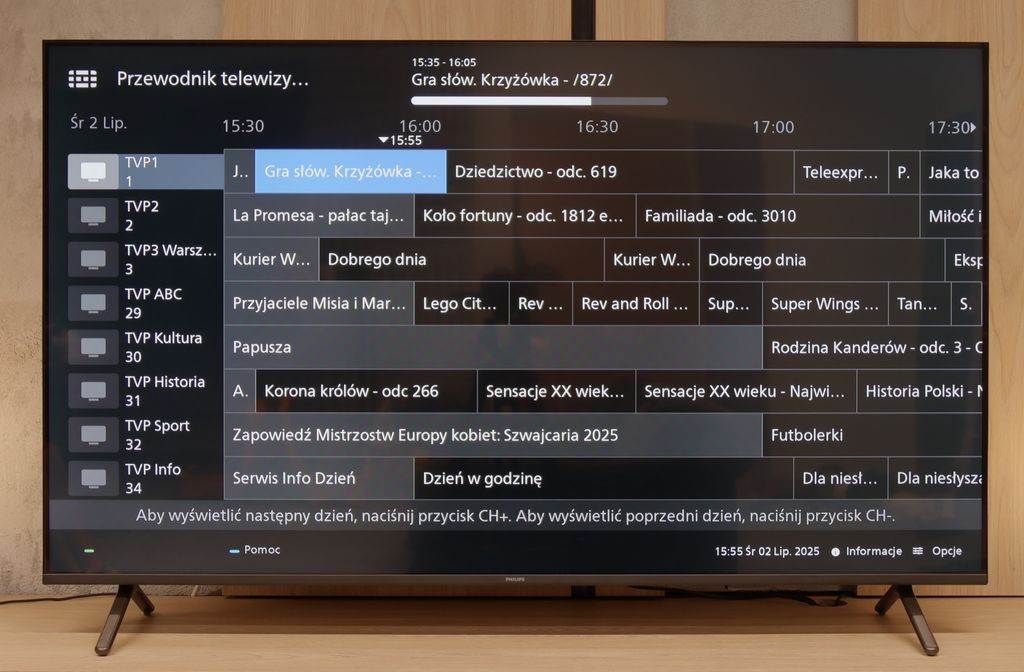
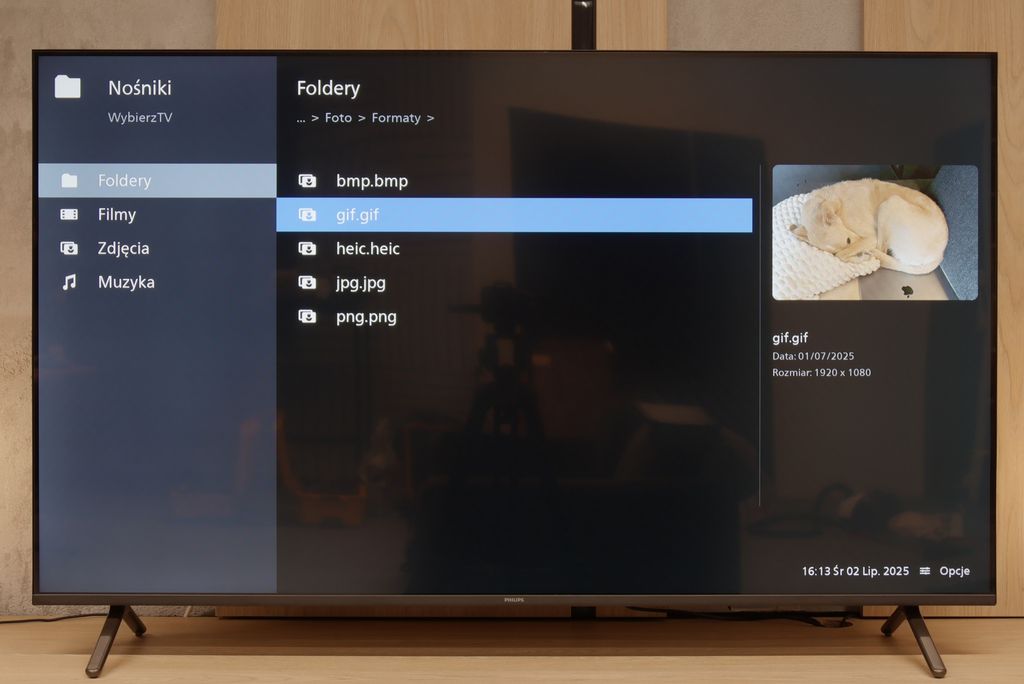
Contrast and black detail
6/10
6.1/10
Local dimming function: No
Local dimming function: No
Contrast:

Result
5,650:1

Result
6,500:1

Result
5,850:1

Result
5,850:1

Result
5,400:1

Result
6,000:1

Result
5,950:1

Result
6,250:1

Result
5,950:1

Result
5,750:1
Halo effect and black detail visibility:

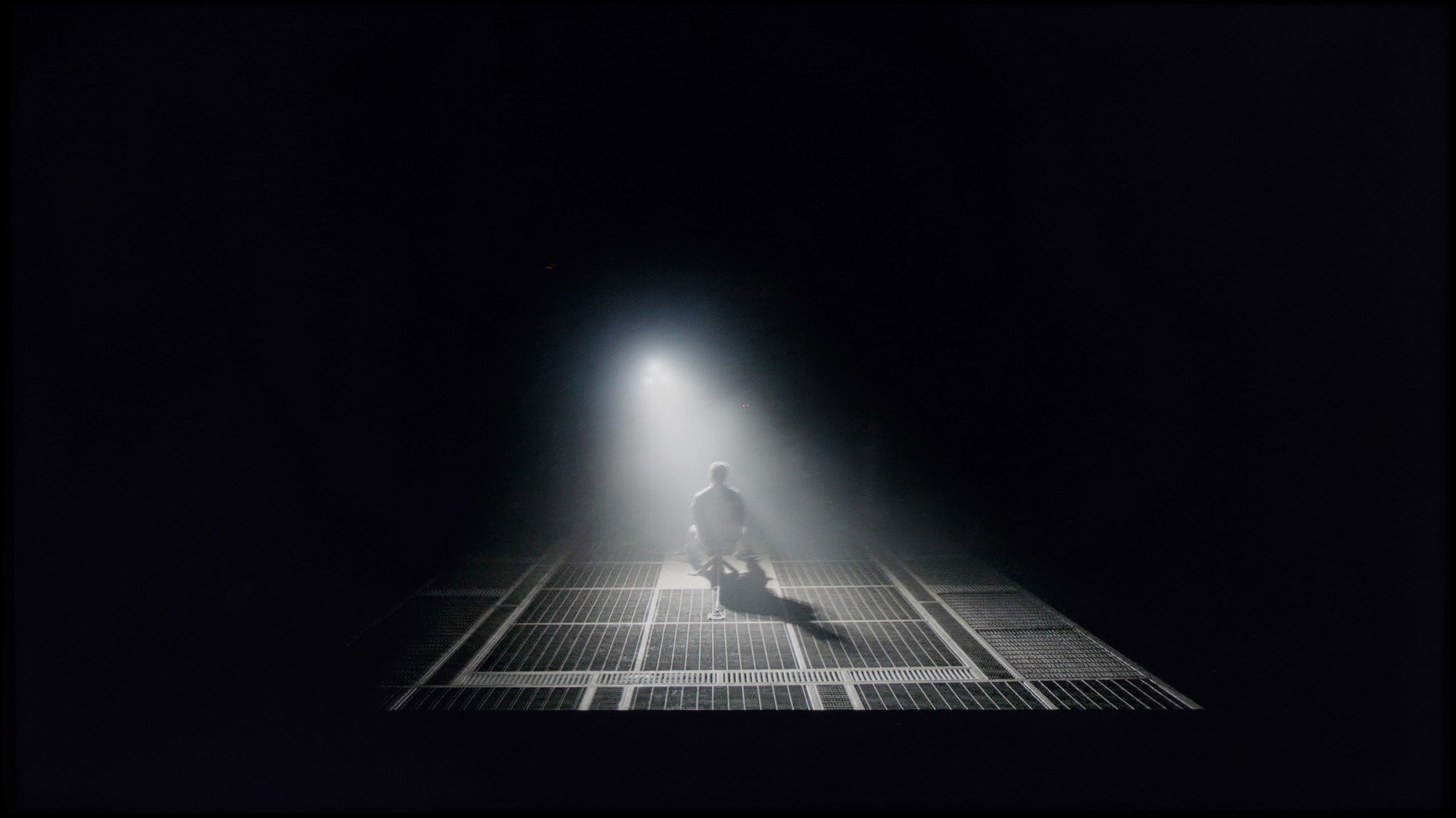
The Samsung Q60D television is equipped with a VA panel, which provides deeper blacks and higher contrast compared to IPS/ADS panels. VA panels are characterised by their better ability to display deep blacks, so if we're looking for an LED display for night viewing, this type of panel shouldn't disappoint us. In contrast tests, the television showed a result of around 6000:1, which can be considered a decent result, providing satisfactory visual experiences in most scenes. In more challenging scenes, like that from the film Oblivion, the television handles light separation well, adding detail and depth. However, in scenes with more demanding lighting compositions, like that from the film Sicario 2, the limitations resulting from the absence of local dimming technology are noticeable. Black elements of the image tend to resemble navy blue. Despite this phenomenon, the Q60D offers truly decent contrast.
Philips PUS8560 in the size version we tested is equipped with a VA panel. This means that black levels – for an LCD TV – can be considered decent. And that is indeed the case with this model. Both blacks and the overall impression of contrast in the movie scenes we tested are really quite good – the image doesn't bleed, and details are visible even in more challenging segments.
But the panel alone is not everything. Unfortunately, the PUS8500 does not come with local dimming (which is a given looking at the TV segment), so one has to reckon with the fact that in completely dark conditions, black can resemble shades of navy more than true black. On the other hand – and here's a plus for Philips – the Ambilight system does an excellent job. The backlighting really affects the perception of contrast. As a result, even if technically the black isn't perfect, the subjective experience of the picture becomes much more enjoyable. For many people, that's enough to make an evening viewing really spectacular.
HDR effect quality
5.7/10
4.1/10
Luminance measurements in HDR:

Result
527 nit

Result
530 nit

Result
524 nit

Result
531 nit

Result
537 nit

Result
273 nit

Result
300 nit

Result
324 nit

Result
343 nit

Result
334 nit
Scene from the movie “Pan” (about 2800 nits)


Scene from the movie “Billy Lynn” (about 1100 nits)

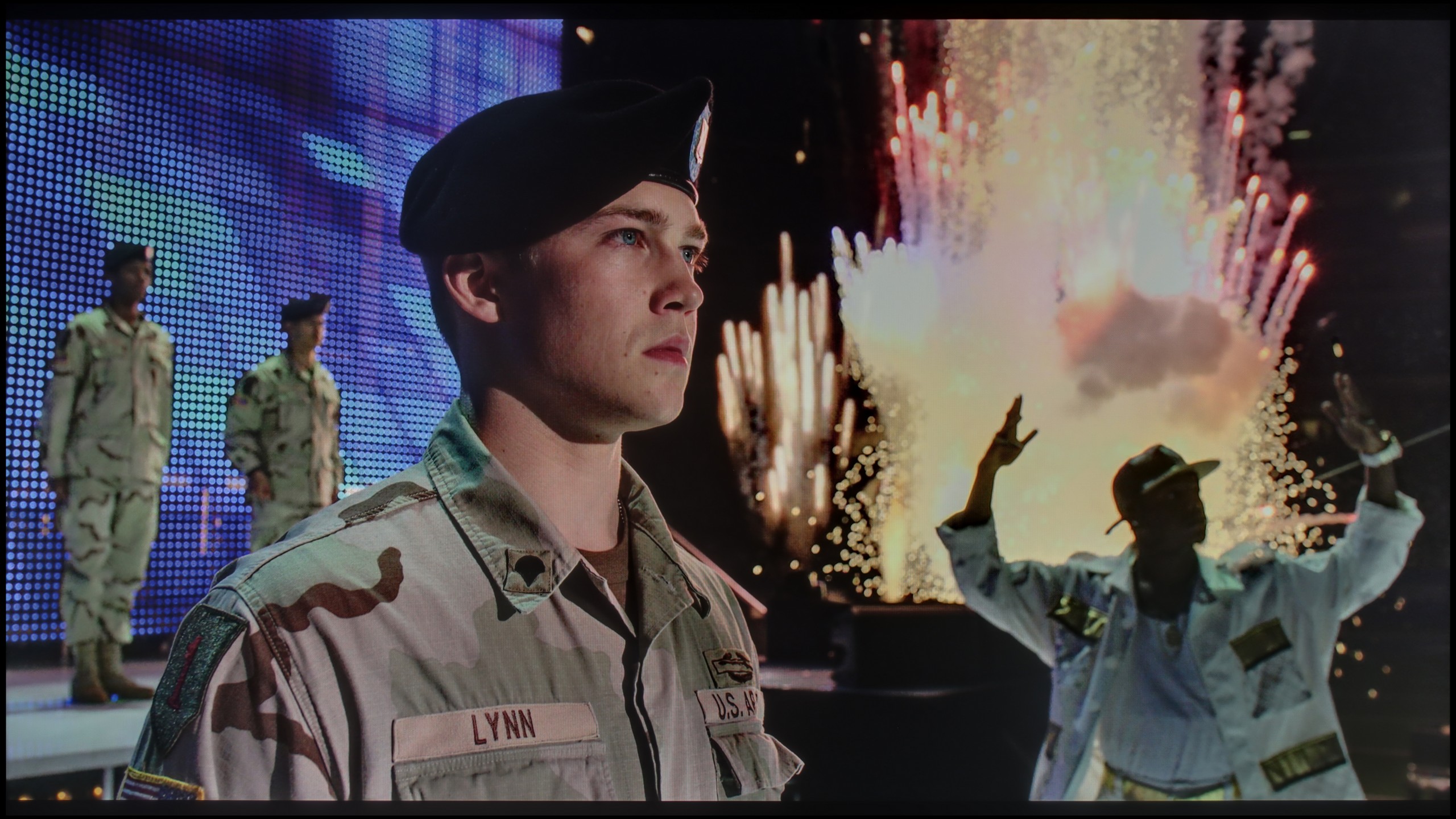
Static HDR10


Dynamic: HDR10+
Dynamic: HDR10+


HDR luminance chart:
Philips PUS8500
Luminancja HDR
Luminance of RGB colors
Samsung Q60D / Q67D / Q68D
Luminancja HDR
Luminance of RGB colors
Television Samsung Q60D, regardless of the tested scene, achieves brightness levels above 500 nits, which is above average for this class of devices. Such a level of brightness allows for a taste of true home cinema, with clearly visible details in bright areas of the image and well-rendered contrast dynamics, especially when watching content from streaming platforms or films played from Blu-ray. This means that movie screenings gain greater depth and realism, particularly in well-lit scenes. Despite the use of quantum dot technology (QLED), the television does not achieve outstanding results in colour reproduction. The coverage of the DCI-P3 colour space is only 90%, which may be noticeable in more demanding scenes, where the richness and saturation of colours play a key role in image quality.
When it comes to HDR performance on the PUS8560, it's safe to say that it's rather average. The brightness of the panel is around 350 nits, so we consider this to be the absolute minimum for watching content in this format. However, it’s not a result that will impress viewers looking for the best possible picture.
On the plus side, it's worth noting that the PUS8500 series – including the PUS8560/12 tested here – is marketed as a QLED television. And indeed, we can expect a wider colour gamut here. This model is equipped with an additional filter (PFS), and the DCI-P3 coverage of around 90% should suffice for most users. This filter operates very similarly to quantum dots. As a result, colours are quite well-saturated. It's not an outstanding result, but it's entirely sufficient for watching movies and series from streaming platforms.
Factory color reproduction
6.5/10
6.2/10


Factory Mode
After calibration

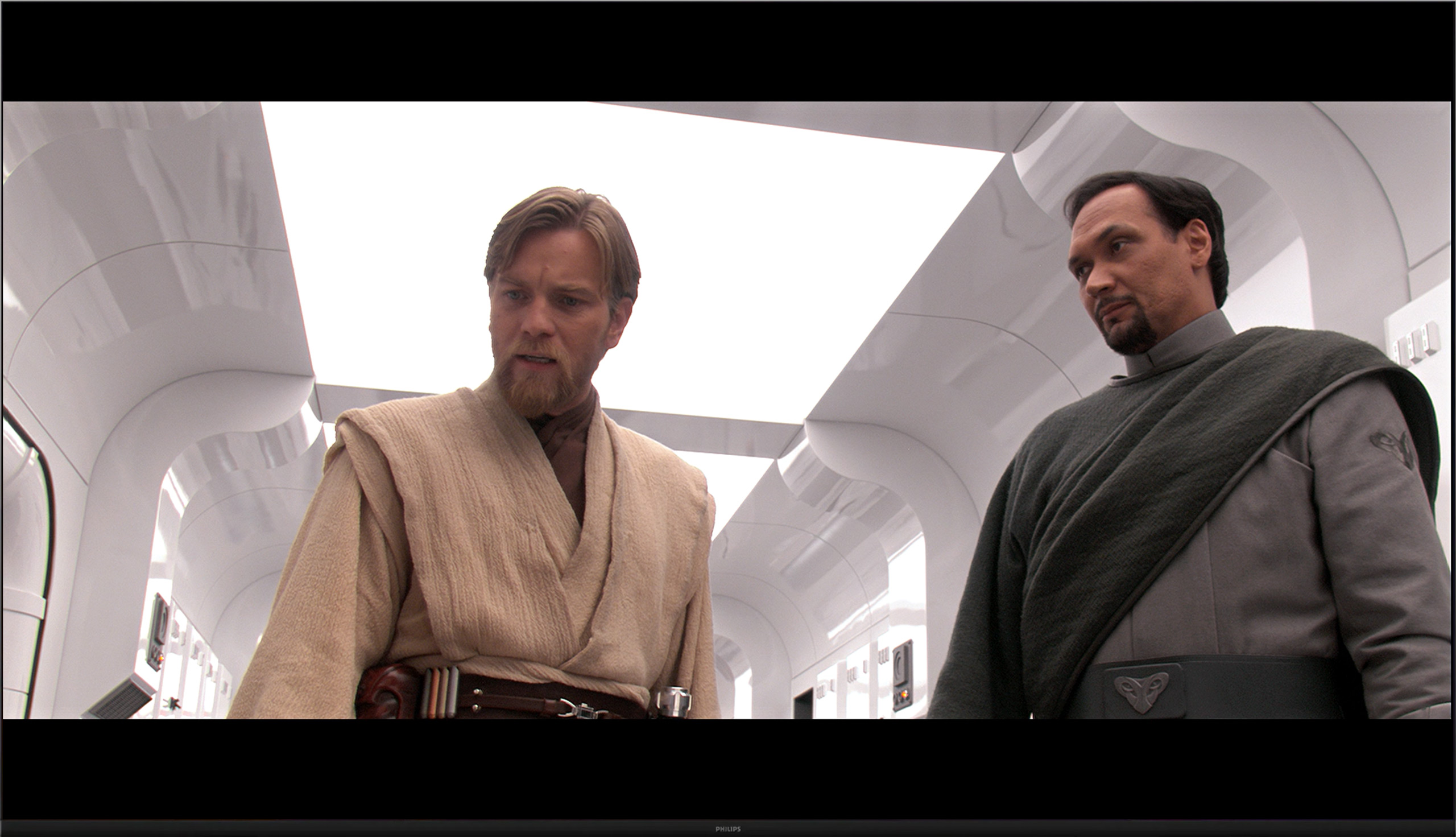
Factory Mode
After calibration
Samsung has been offering a "Filmmaker" mode in its TVs for several years now, aimed at providing the most faithful picture settings straight from the factory, in line with the vision of filmmakers. This is certainly a big step towards cinematic quality at home, but it is worth noting that this mode is not without its issues.
For example, the white balance in both SDR and HDR modes exhibits an excessive amount of red, which makes the image too warm. As a result, the skin tones of actors and bright scenes can appear unnaturally flushed. The Colour Checker test further confirms this problem – colour samples often shift towards red hues, deviating from the neutral colour representation that would be more desirable in a professional setup.
When it comes to contrast, there is a noticeable strong drop at the beginning of the gamma graph, where values below 2.4 drop all the way down to 2.1. As a result, the image in darker scenes may appear less distinct, losing depth. In the case of HDR content, the EOTF curve (which is responsible for brightness reproduction) shows a strong spike at the beginning of the graph, which can lead to excessive brightness in the lighter parts of the image, disrupting the natural tonal balance.
We tested the television on the best available factory settings, that is, in Film/Filmmaker mode – this is the mode we recommend for everyday viewing. Unfortunately, it is not without its flaws. Both in HD and HDR content, the image had a distinct tendency to pinkness, caused by an excess of red and blue in the white balance. Another issue turned out to be excessive brightness of the image, as confirmed by both the gamma graph and the EOTF curve. This characteristic was responsible for the loss of detail and washed-out colours in more challenging HDR scenes we mentioned earlier. All of this led to quite significant colour reproduction errors – in extreme cases, the delta E value exceeded 7, while the threshold for visibility of errors for the human eye is about 3. This situation can be improved through calibration, and you can read about its effects below.
Color reproduction after calibration
8/10
8.4/10




After professional calibration of the Samsung Q60D television in film mode, users can enjoy a significant improvement in image quality. Samsung televisions have always offered 2- and 20-point grayscale adjustment and an advanced CMS (Colour Management System), allowing for precise colour and shade adjustments. The white balance for both SDR and HDR has been stripped of strong peaks and tendencies towards colour drifting into red tones, significantly enhancing the naturalness of the image. Although a few larger errors can still be observed in HDR mode, the overall quality of colour reproduction has been excellently improved. Regarding contrast, although drastic changes cannot be said due to the limitations of the television's technology, the improvement is noticeable. Thanks to calibration, details in dark scenes are more visible, and the differences between light and dark elements of the image have been enhanced. This makes the overall perception of the image more satisfying, allowing viewers to enjoy greater depth and realism in the displayed content.
The Dutch manufacturer offers quite a large dose of settings in its products, so as usual, we decided to tinker with them a bit. The effects are immediately noticeable – we managed to correct the white balance, which made the image cease to appear overly pinkish. The brightness characteristics were also partially equalised, of course within the limits that the television itself allows. The picture is no longer so excessively brightened, and the overall reception after calibration is definitely better than in the factory settings of the Filmmaker mode.
You could only nitpick about the characteristics of the EOTF curve, which still indicates that the image tends to brighten HDR content. Despite our efforts, the darkest parts of the scenes can still be too bright, and the brightest ones do not always reach their full contrast potential. However, it must be clearly stated that we are dealing with a typically budget-oriented design – one cannot expect reference-quality rendering of HDR content from it.
Calibration has definitely helped this model – it improved the balance, toned down the aggressive colour palette, and brought the image closer to what one can expect from a well-configured movie mode. However, there are certain limitations that cannot be overcome.
Smoothness of tonal transitions
7/10
6.3/10

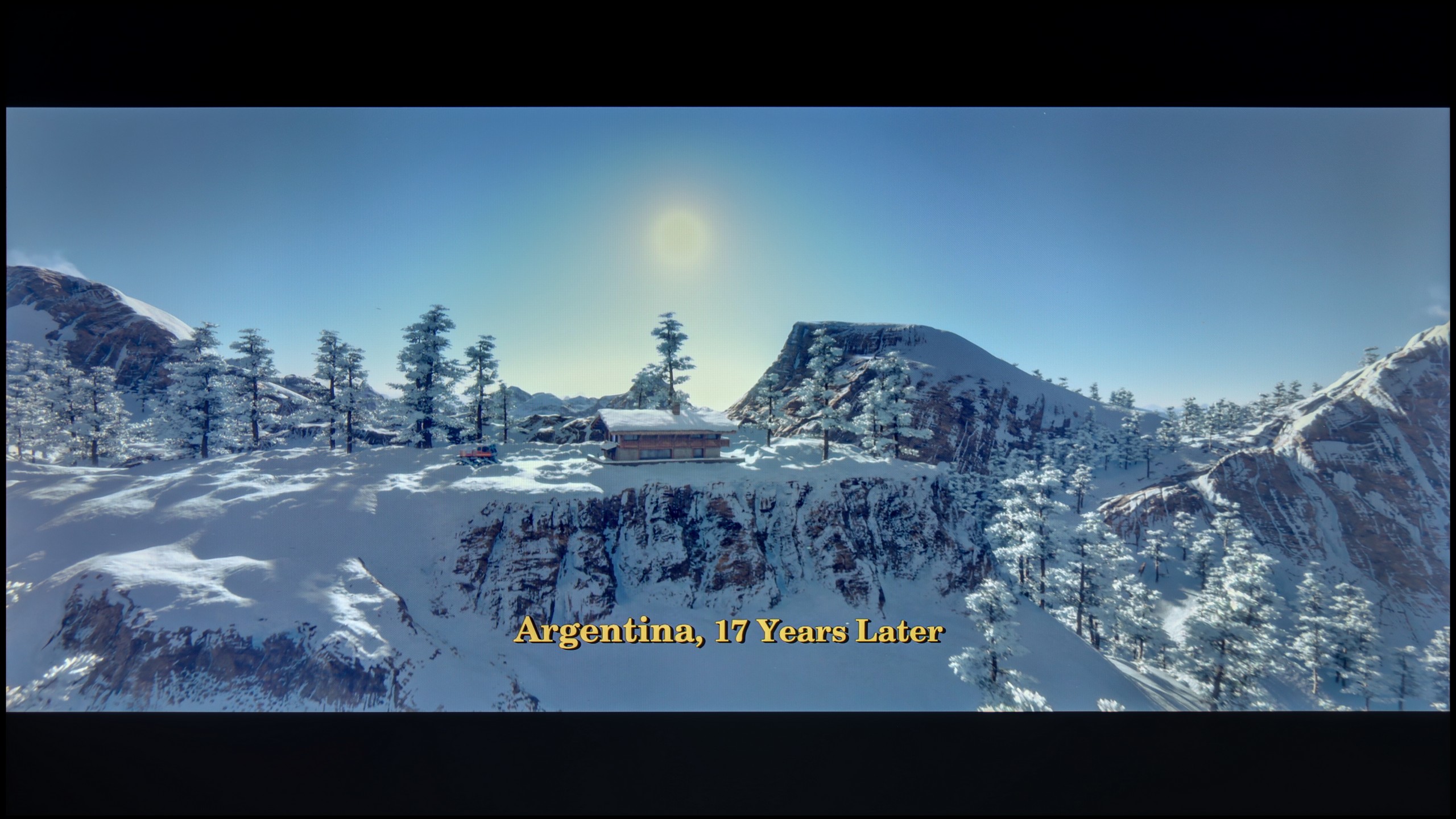

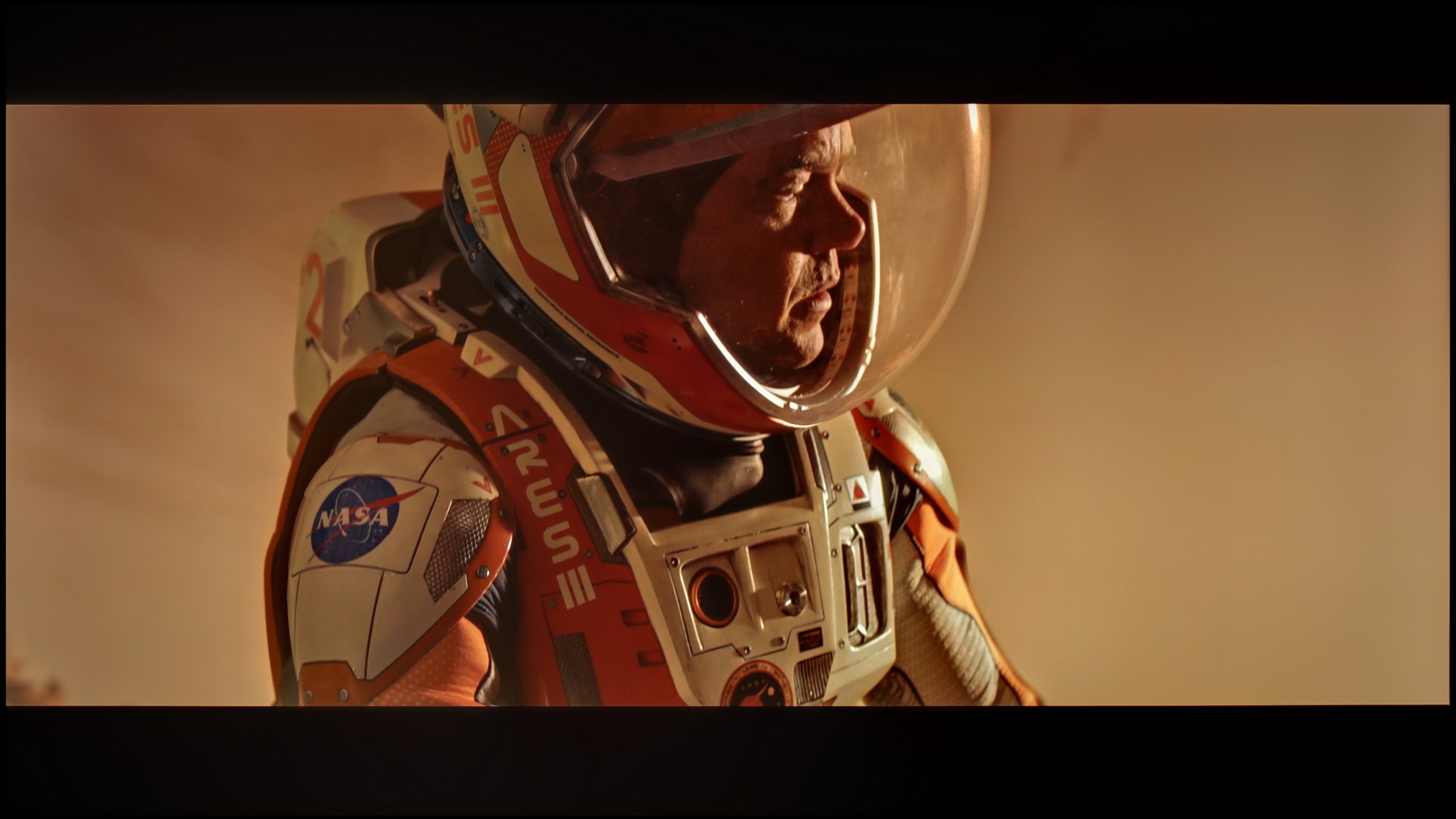

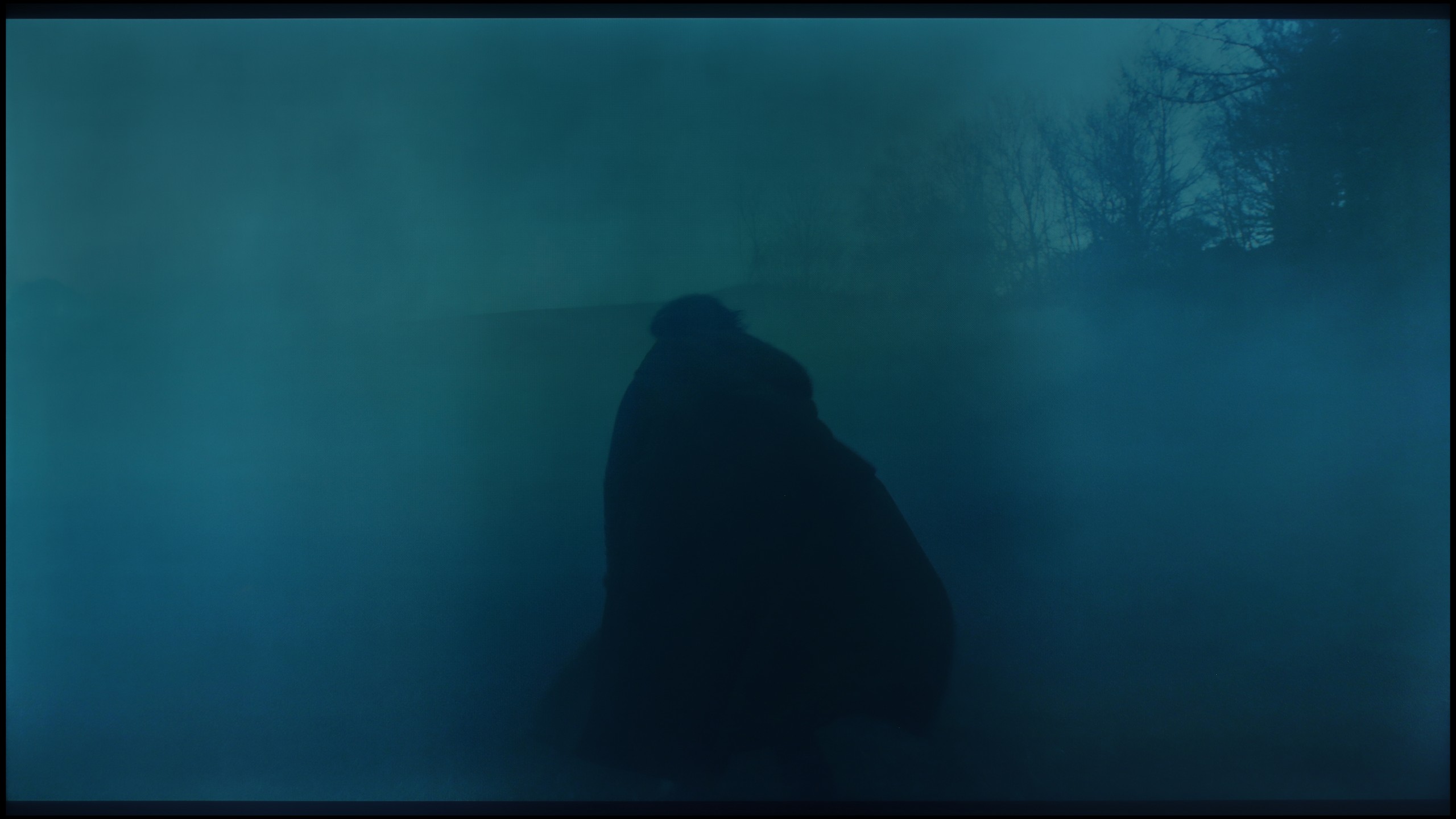

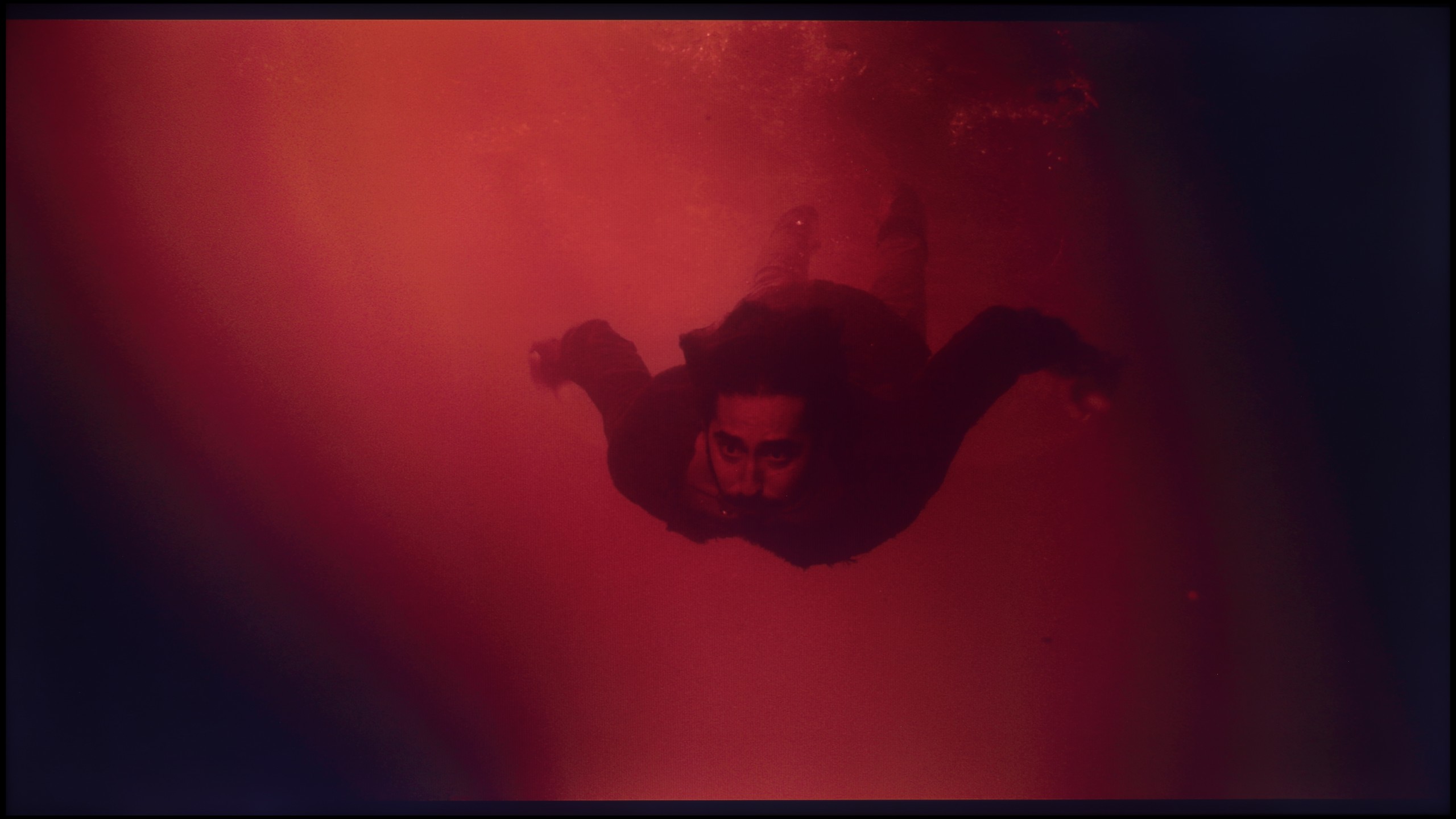




Samsung Q60D offers decent performance, making it an attractive choice for movie and gaming enthusiasts. The gradation of bright colours is definitely a strong point of this model, making brighter scenes appear exceptionally natural and smooth. Although with darker transitions the colour blending is somewhat more noticeable, the overall effect is still satisfactory. The television handles tonal transitions well, providing viewers with visual experiences that enhance movie nights and gaming sessions. With these qualities, the Samsung Q60D won't spoil our film screenings.
The PUS8560 handles colour blending into smooth gradients very well. During testing, the image appeared coherent and natural, with serious issues regarding tonal transitions occurring only in very dark scenes – for example, in a shot with red water, where subtle cut-offs between colours could be observed. However, these are rather exceptions that don’t spoil the perception of most content. It’s worth mentioning another phenomenon that has a greater impact on image quality – this relates to the so-called dithering, which is a slight “tingling” visible on solid backgrounds. This effect can be particularly noticeable in high-quality materials and may slightly detract from the impression of image clarity. It is for this fault that we deducted some points in the rating.
Image scaling and smoothness of tonal transitions
5.4/10
6.1/10
Smooth transition function

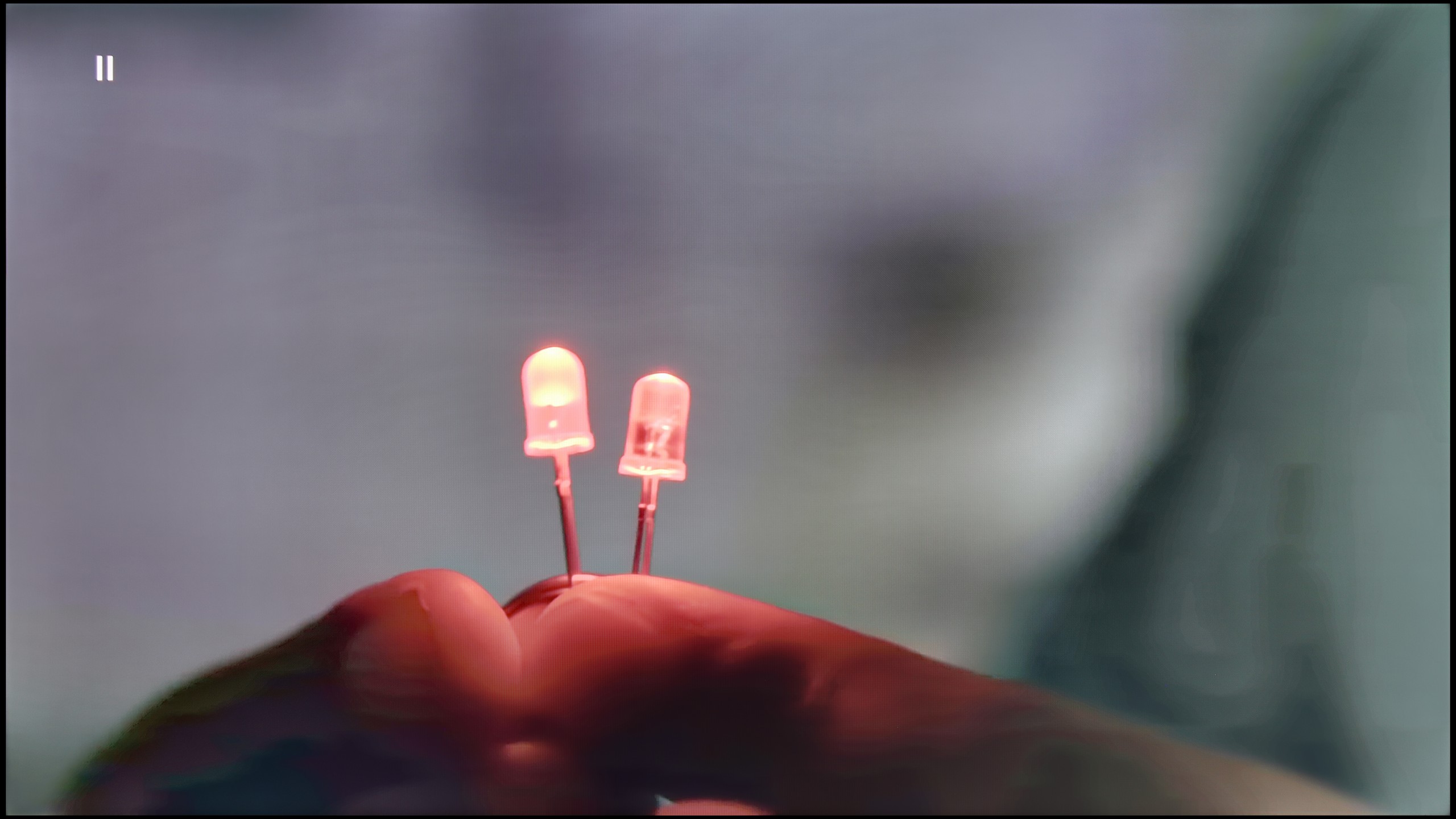
Image without overscan on the SD signal


However, when it comes to processing and scaling lower quality materials, the television performs quite well. The image is rendered without overscan, which ensures full use of the available screen space. Additionally, the outlines of the model or branches of the tree are not overly jagged, resulting in a satisfactory quality of the displayed content. Although noise reduction could be more effective, the overall processing results of lower quality materials are positive and meet expectations.
Philips PUS8560 offers a deinterlacing function, hidden under the name “distortion reduction”. And while it indeed serves its purpose, smoothing out problematic tonal transitions, it operates a bit too broadly. In practice, it affects not just colourful gradients but also softens faces, clothing textures, and furniture surfaces. This undermines the authenticity of the image – especially in films where natural texture is of great importance. However, if someone is looking for smoothing at any cost, it’s best to set this option to “Low”. For cinema image enthusiasts – we definitely do not recommend it.
On the plus side, the quality of scaling older materials is worth noting – the PUS8560 model handles them surprisingly well. The image retains a natural softness without artificially boosted sharpness. It’s also worth mentioning that the TV correctly displays very low-resolution content, avoiding issues with image cropping (so-called overscan).
Blur and motion smoothness
4.5/10
4/10

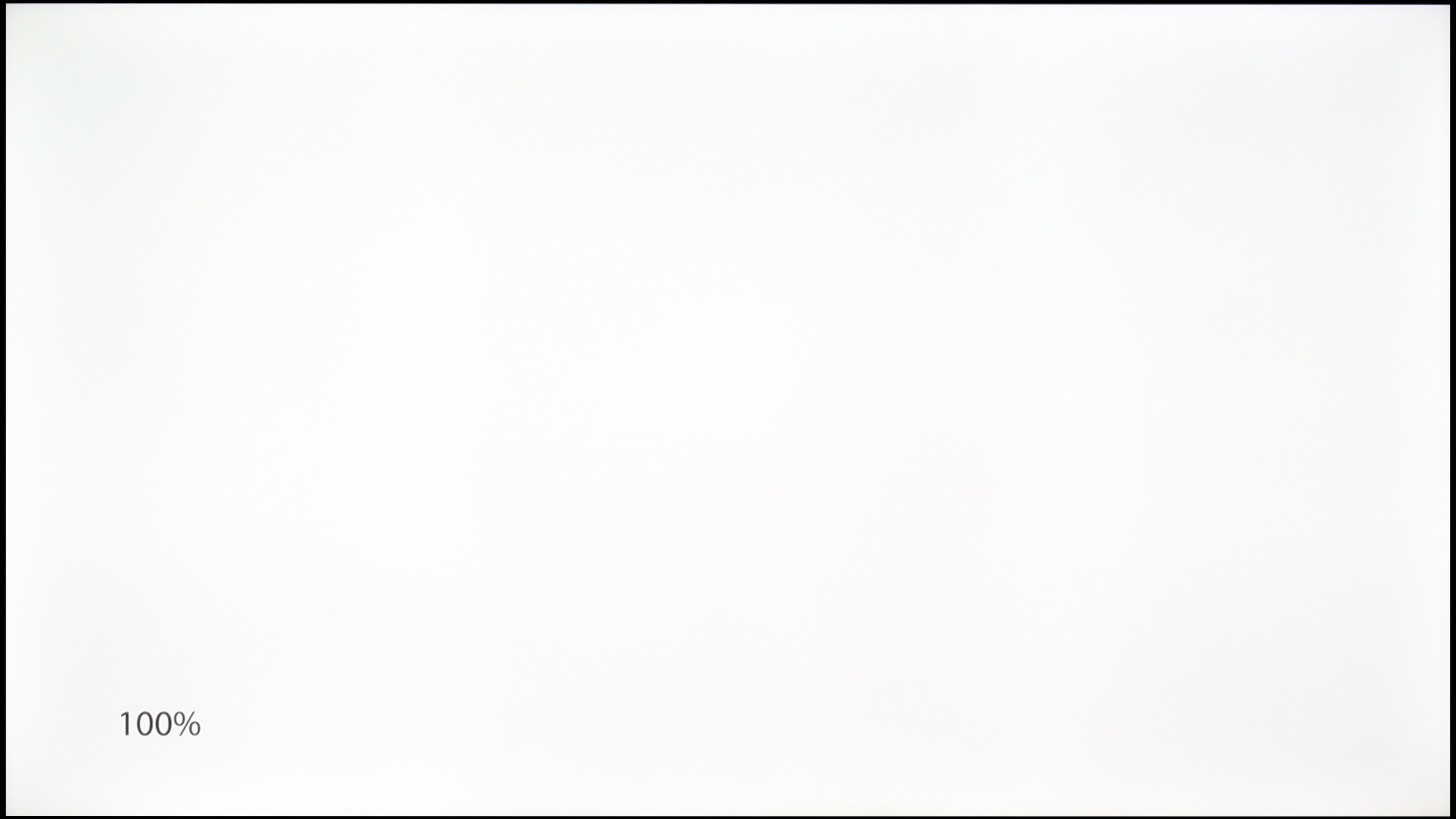
Blur (native resolution, maximum refresh rate):



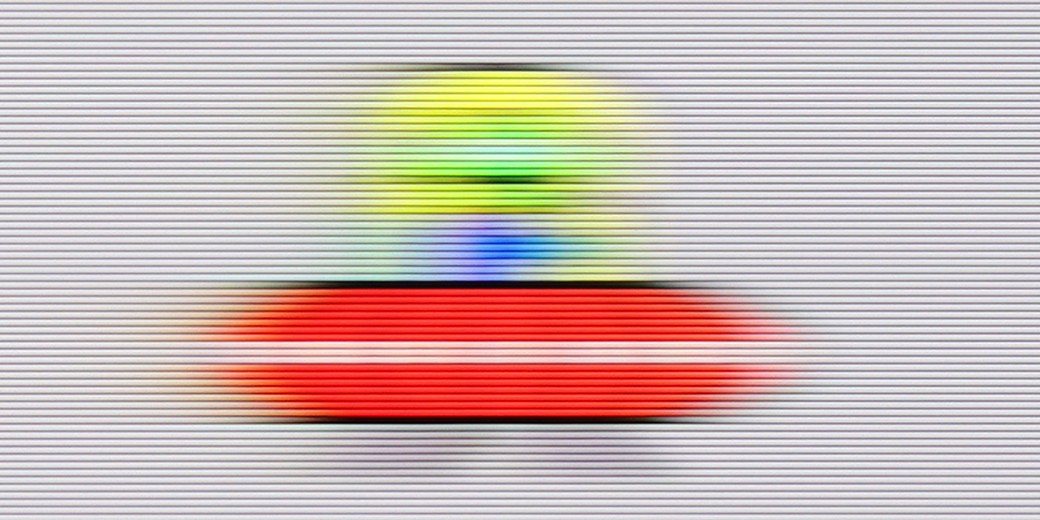
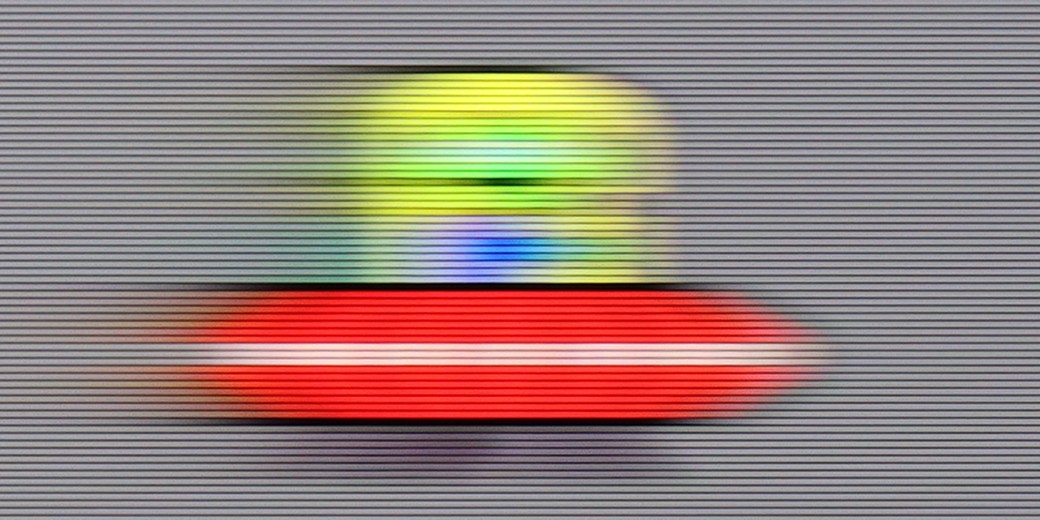
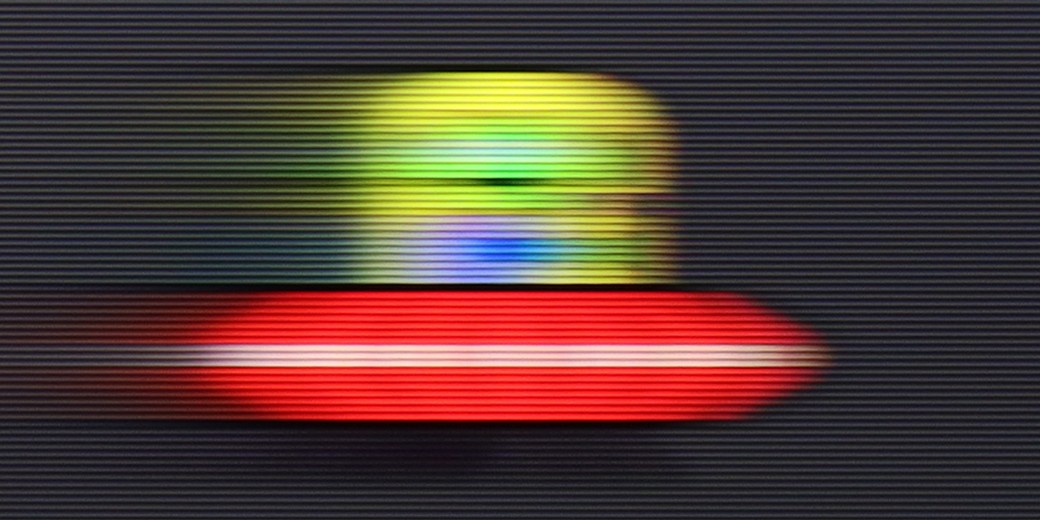
Blur (BFI function enabled):
Image flickers in this mode



Samsung Q60D is equipped with a 60 Hz panel and a feature to enhance movie smoothness, known as "Motion Blur Reduction." This function aims to minimise motion blur and improve overall image fluidity, which will certainly appeal to users who primarily seek a television for watching movies and series. Thanks to this technology, viewers can enjoy a more fluid visual experience, even in dynamic action scenes where details are crucial. However, it is worth noting that while "Motion Blur Reduction" improves image fluidity in films, for gaming, this panel may not be the best choice due to its considerable motion blur effect, which can be seen in the photo below.
The Philips PUS8560 is a television equipped with a 60 Hz refresh rate panel, which already limits its capabilities for displaying dynamic content right from the start. Watching sports or playing on a console is not one of the more enjoyable experiences. The situation is further worsened by the absence of any option to improve film fluidity. In the menu, you won’t find settings that would allow for the activation of motion smoothing or even a slight motion blur for films recorded at 24 frames per second. You can imagine the effect. The image can appear choppy, especially in shots with panoramic camera movements.
Console compatibility and gaming features
4.8/10
4.7/10
- ALLM
- VRR
- VRR range48 - 60Hz
- Dolby Vision Game Mode
- Correct implementation of HGIG
- 1080p@120Hz
- 1440p@120Hz
- 4K@120Hz
- Game bar

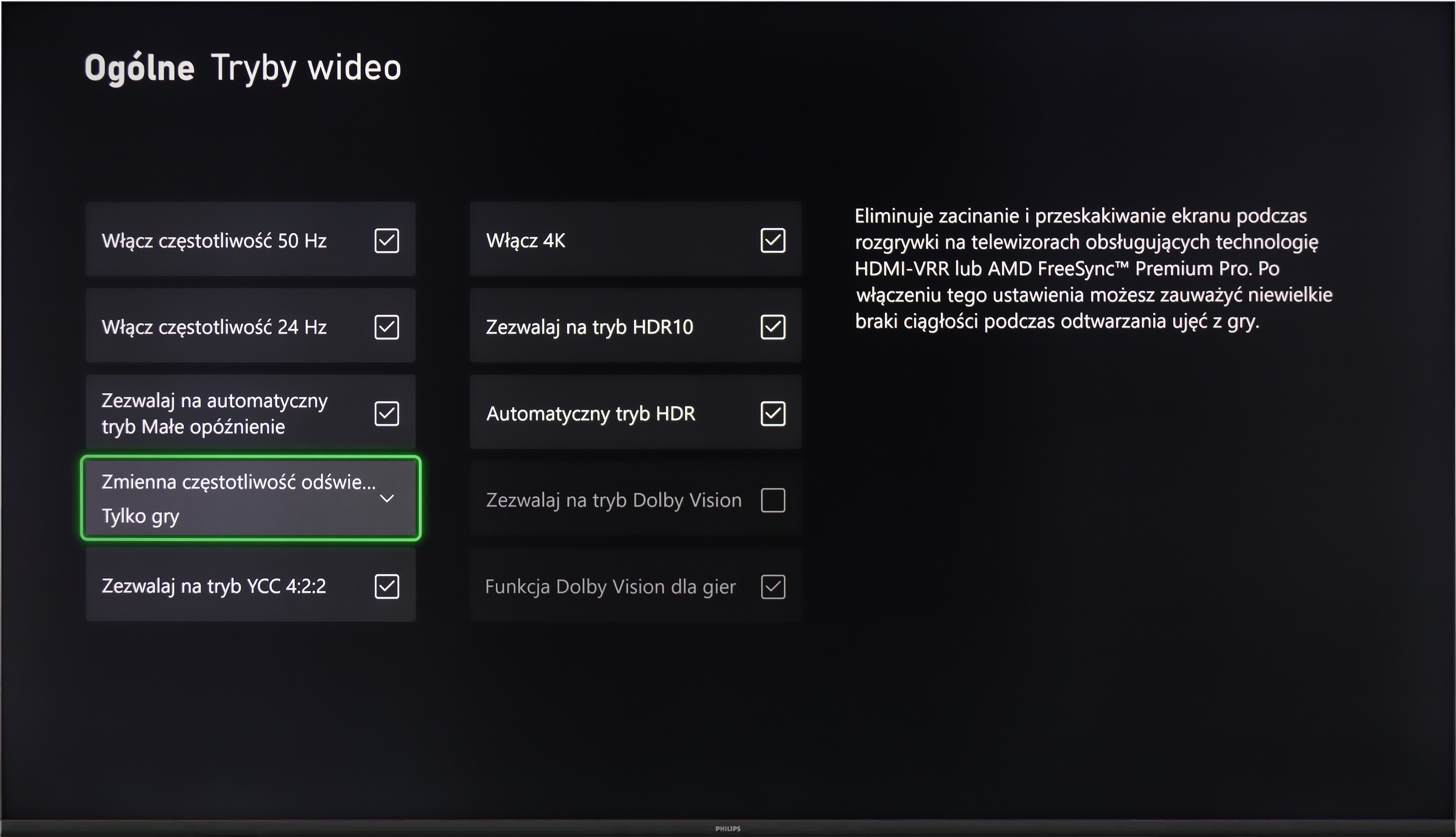

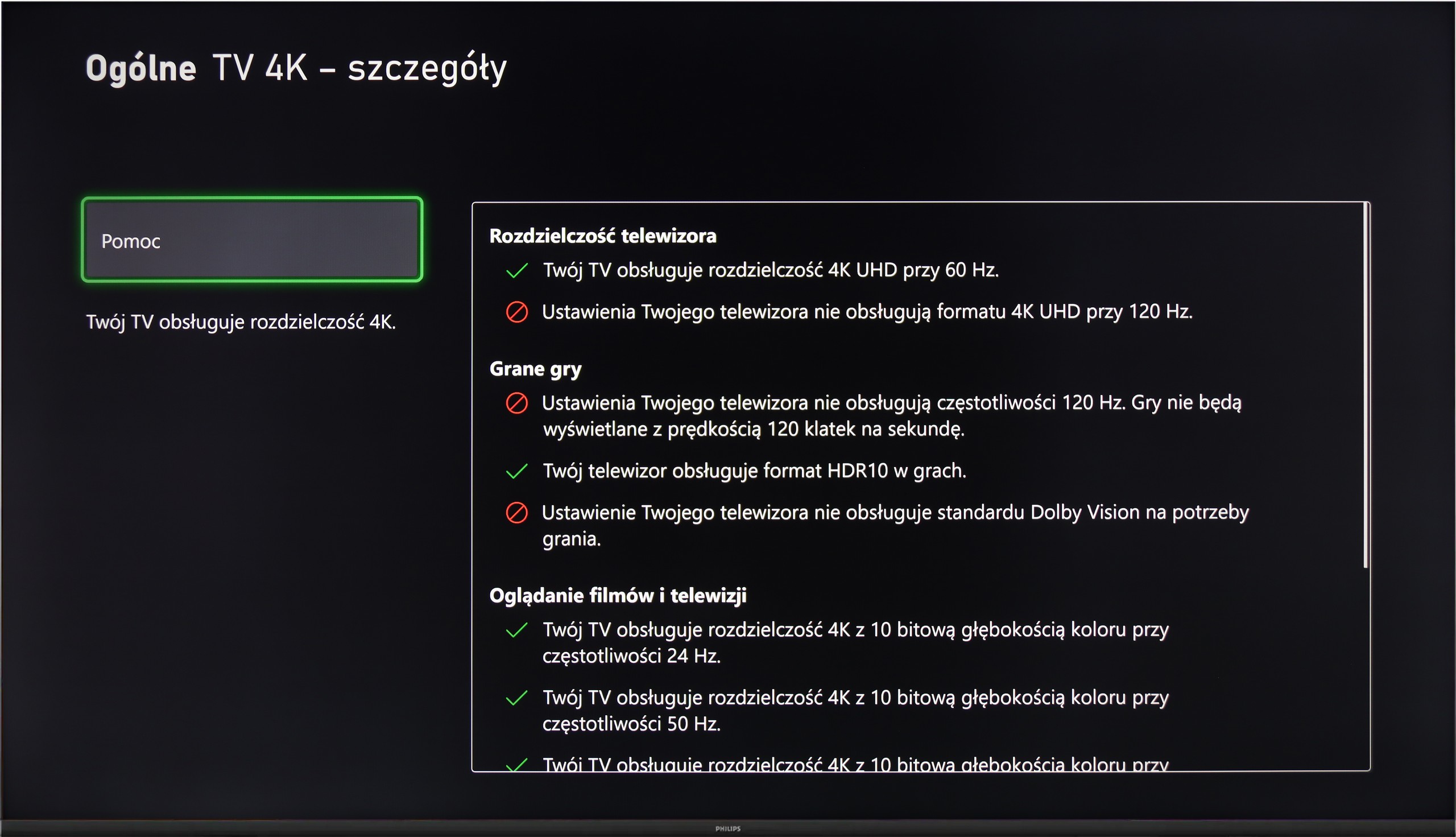

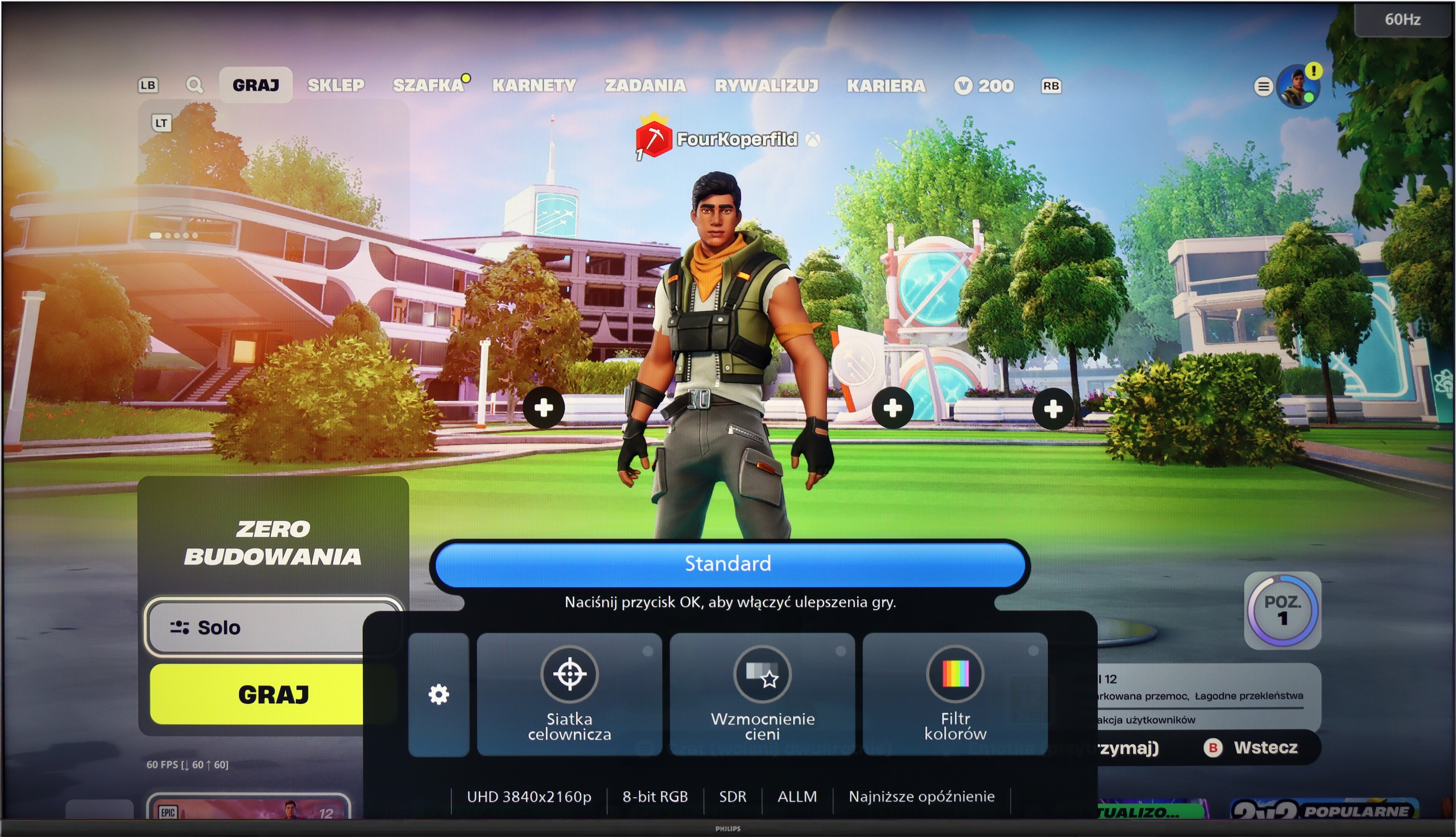

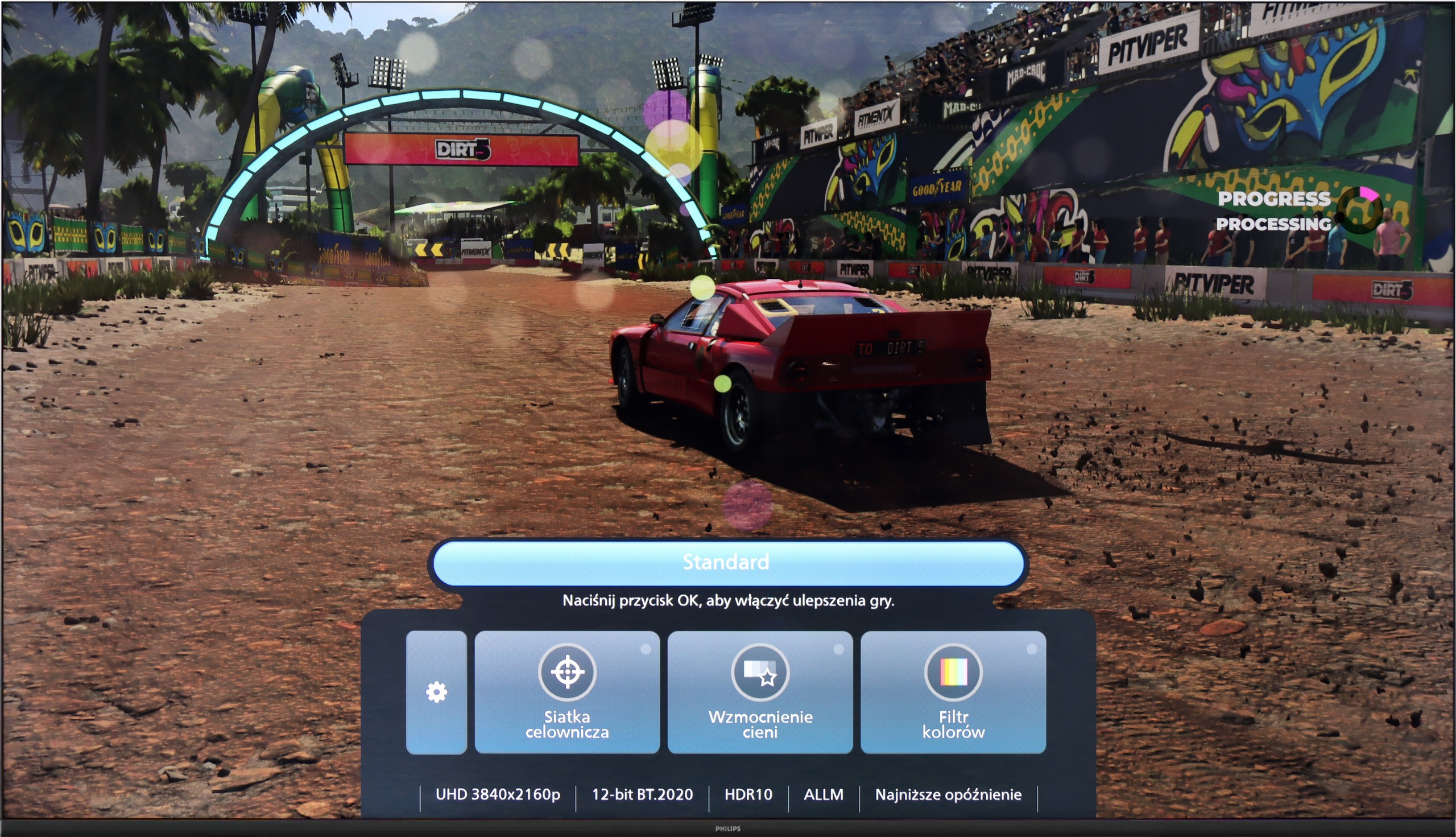
Samsung Q60D has been equipped with features such as ALLM (Auto Low Latency Mode), HGiG (HDR Gaming Interest Group) and Game Bar, which significantly enhance the gaming experience. However, the lack of HDMI 2.1 implementation limits its capabilities, preventing the use of VRR (Variable Refresh Rate), which could further improve smoothness and image quality. Generally, for casual gamers, this TV should perform well in everyday use, providing satisfactory gaming experiences. However, if we are more demanding in terms of gaming, it is worth considering models with a higher refresh rate and HDMI 2.1, which will ensure full functionality and better support for the latest games. In such cases, investing in a more advanced TV will yield significantly better results in terms of smoothness and image quality, which is crucial for gaming enthusiasts.
Although the Philips PUS8560 is not designed with gamers in mind, the manufacturer has equipped it with a few features that may prove useful when connecting a console. Onboard, we find automatic switching to game mode (ALLM), as well as a simple connection status information bar – the so-called Game Bar. It doesn't make a particularly visual impression, but it serves its purpose. The presence of variable refresh rate (VRR), operating in the range of 48 to 60 Hz, may come as a surprise. This is not a wide range, but for less demanding games or titles with unstable frame rates, VRR can help reduce the tearing effect. However, this is the only element that can be considered beyond the minimum.
It must be clearly stated that the PUS8560 is not equipment for gamers looking for a responsive screen and full support for modern console features. It lacks HDMI 2.1 ports, the refresh rate is limited to 60 Hz, and the panel's response time is not among the fastest. This model may at best suit people who play occasionally and want to enjoy the Ambilight system.
Input lag
9.9/10
10/10
SDR
HDR
Dolby Vision
When it comes to input lag, the Samsung Q60D TV does not disappoint in this aspect. With results around 15 ms, the television offers truly impressive responsiveness. Such low input lag means that reactions to commands from the controller are immediate, resulting in a better gaming experience, especially in dynamic titles that require precise movements.
The input lag on the PUS8560 is very good. When we previously mentioned that this screen is rather for the "casual gamer", there's nothing to be ashamed of in this regard – even compared to screens aimed at gamers. Results around 12 ms are truly remarkable, allowing for an enjoyable responsive gameplay experience. It doesn't matter whether we're playing in Full HD or 4K – the lag remains equally low, so if you're after a fast reaction time, the PUS8560 definitely won't disappoint in this area.
Compatibility with PC
6/10
5.6/10

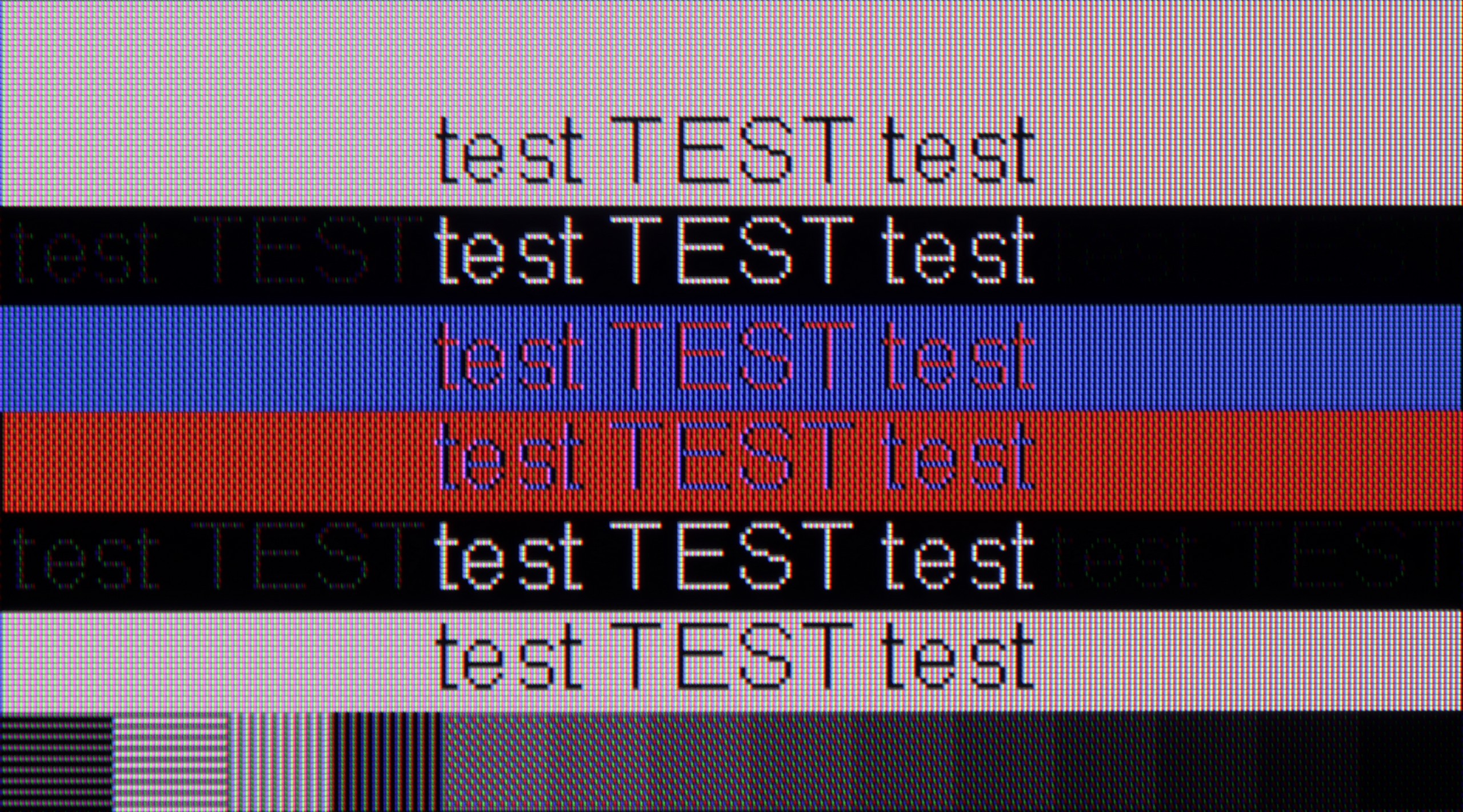
When it comes to working on a PC, the Samsung Q60D television offers very good font readability, regardless of the background it is displayed on. Thanks to support for the 4:4:4 chroma format, text is clear and sharp, which is important when using office applications or browsing the internet. Additionally, a low input lag of 15 ms means that responses are immediate, significantly improving user comfort during work or gaming on a computer. However, the television has a 60Hz panel and does not support G-Sync functionality, which could satisfy PC gamers.
If we're talking about working with a PC on the PUS8560, it looks… quite strange. Chroma 4:4:4 is present in “Monitor” mode, but there’s a problem with grey fonts – not all subpixels light up, which makes the text appear jagged. Meanwhile, in “Game” mode, chroma 4:4:4 disappears, but the grey fonts look correct. In practice, we are therefore forced to juggle settings if we want to have perfectly readable text all the time. And what about gaming on a computer? Here our opinion remains unchanged compared to consoles – it’s possible, but without fireworks. There’s no variable refresh rate for G-SYNC graphics cards, and the refresh rate itself remains relatively low. On the plus side, we can once again highlight the very low input lag, which saves the situation in fast-paced games.
Viewing angles
3/10
3.3/10
Samsung Q60D is equipped with a VA panel. The viewing angles are not its strongest point; when we watch the picture from the side, we may notice colour distortions and a drop in brightness. However, VA panels stand out with good black reproduction, which translates to deeper and more intense movie scenes.
The viewing angles on the PUS8560 are exactly what you'd expect from a VA panel - it's not the best. The image loses quality even with a slight shift off-axis – colours become washed out, and blacks start to resemble a dark navy. This is, of course, the price for the better contrast that VA offers head-on. In the case of our 55-inch model, it can still be acceptable, especially if the TV is positioned perfectly in front of the couch. But with larger screens or a less central setup in the living room – it could be a problem for comfortable viewing.
TV efficiency during daytime
6/10
4.9/10

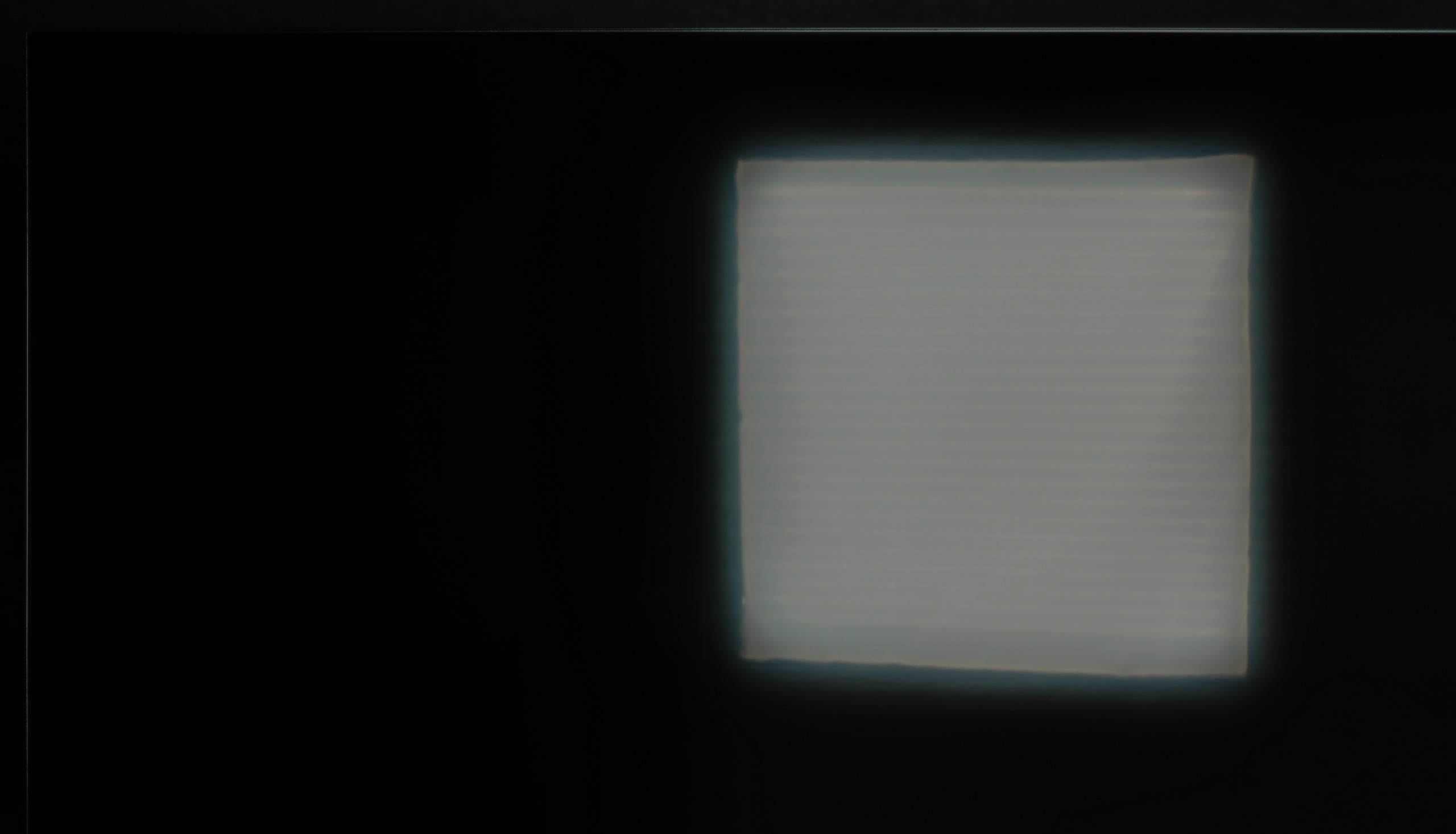

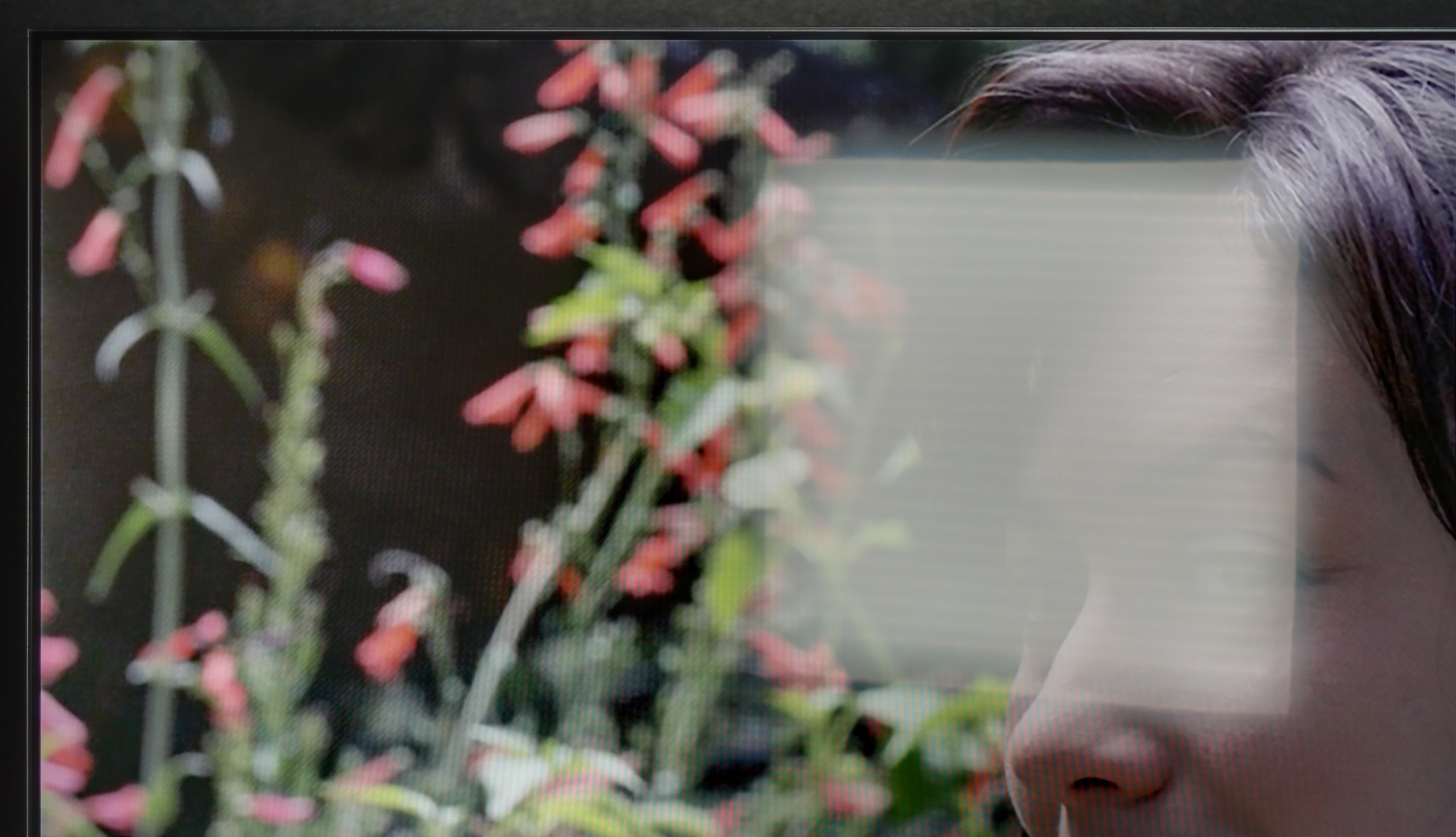
Matrix brightness
Average luminance SDR
Philips PUS8500 : 331 cd/m2
Samsung Q60D / Q67D / Q68D: 542 cd/m2
Samsung Q60D is equipped with a satin matrix, which manages glare reduction moderately. Although the matrix does not eliminate it completely, its high brightness level of 550 nits ensures that the picture remains clear even in bright lighting conditions. This makes watching television during the day still comfortable, with details being well visible, making this model a suitable choice for those using the television in daylight.
The PUS8560 performs reasonably well during the day... moderately. The satin finish of the panel does a pretty good job of reducing reflections, which means that light from windows or lamps doesn't interfere too much. The black levels also look decent for a VA panel – even in daylight, there aren't significant contrast losses. But the magic fades when it gets really bright. The panel's brightness is around 300 nits, which is definitely too little to speak of full comfort in a heavily sunlit room. In such conditions, the PUS8560 simply needs to be complemented with blinds – otherwise, the picture starts to look quite washed out.
Details about the matrix
Subpixel Structure:

Panel uniformity:

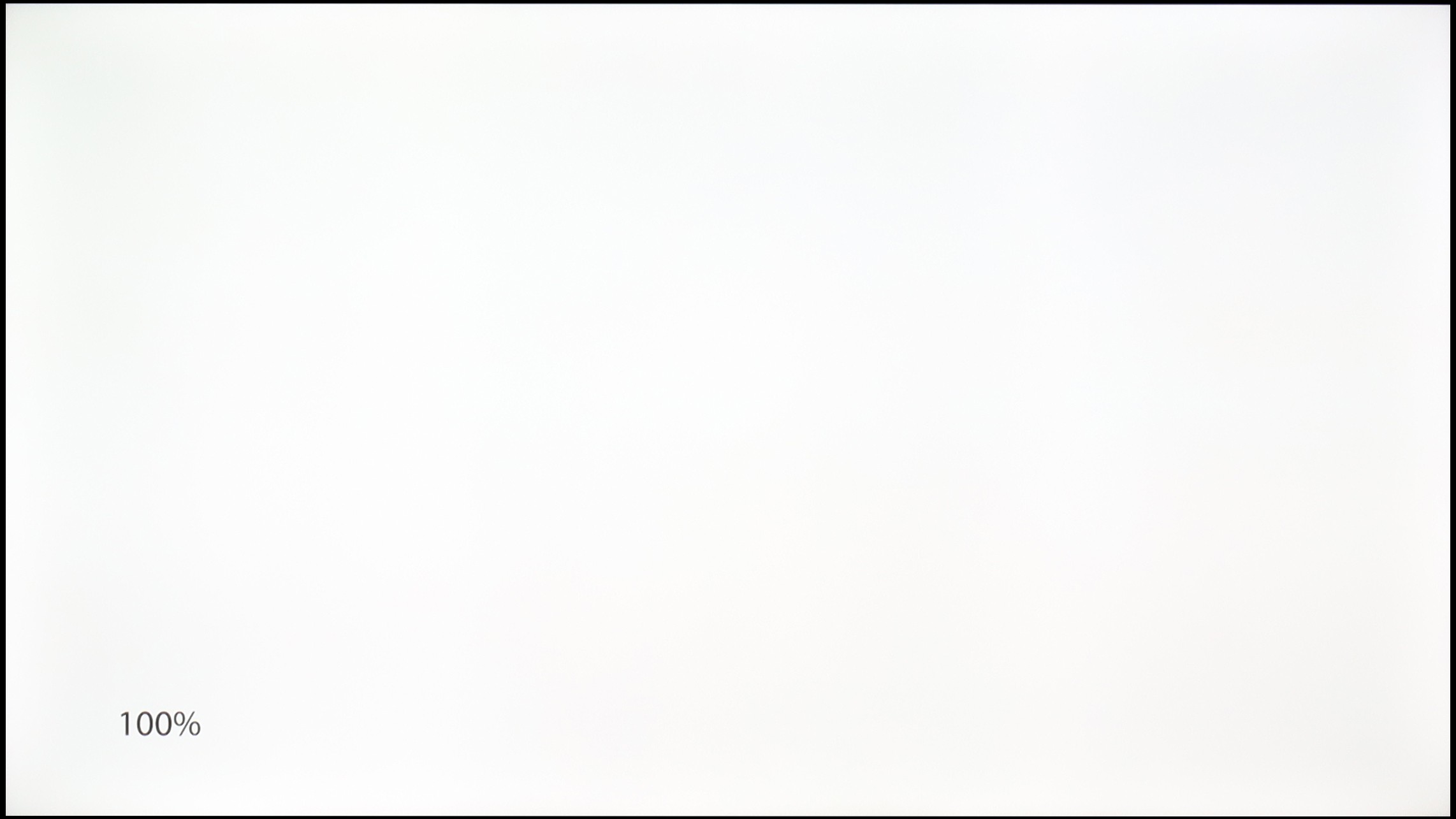
Samsung Q60D / Q67D / Q68D
Philips PUS8500
TV features
7.3/10
4.9/10
- HDMI inputs3 x HDMI 2.0, 0 x HDMI 2.13 x HDMI 2.0, 0 x HDMI 2.1
- OutputsToslink (Optical audio), eARC (HDMI), ARC (HDMI)Toslink (Optical audio), eARC (HDMI), ARC (HDMI), Mini-Jack (Headphones)
- Network InterfacesWi-Fi 2.4GHz, Wi-Fi 5GHz, Ethernet (LAN) 100MbpsWi-Fi 2.4GHz, Wi-Fi 5GHz, Ethernet (LAN) 100Mbps
- TV receptionDVB-T, DVB-T2, DVB-S, DVB-S2, DVB-CDVB-T, DVB-T2, DVB-S, DVB-S2, DVB-C
Classic features:
- Recording to USB (terrestrial TV)
- Recording programming
- Picture in Picture (PiP)
- RF remote control (no need to aim at the screen)
- Backlit remote control
- Teletext
- Audio only mode
- Possibility to connect Bluetooth headphones to the TV
- Possibility to simultaneously use Bluetooth headphones and the TV speaker
Smart features:
- AirPlay
- Screen mirroring (Windows Miracast)
- Wyszukiwanie głosowe
- Voice search in native language
- Ability to connect a keyboard and mouse


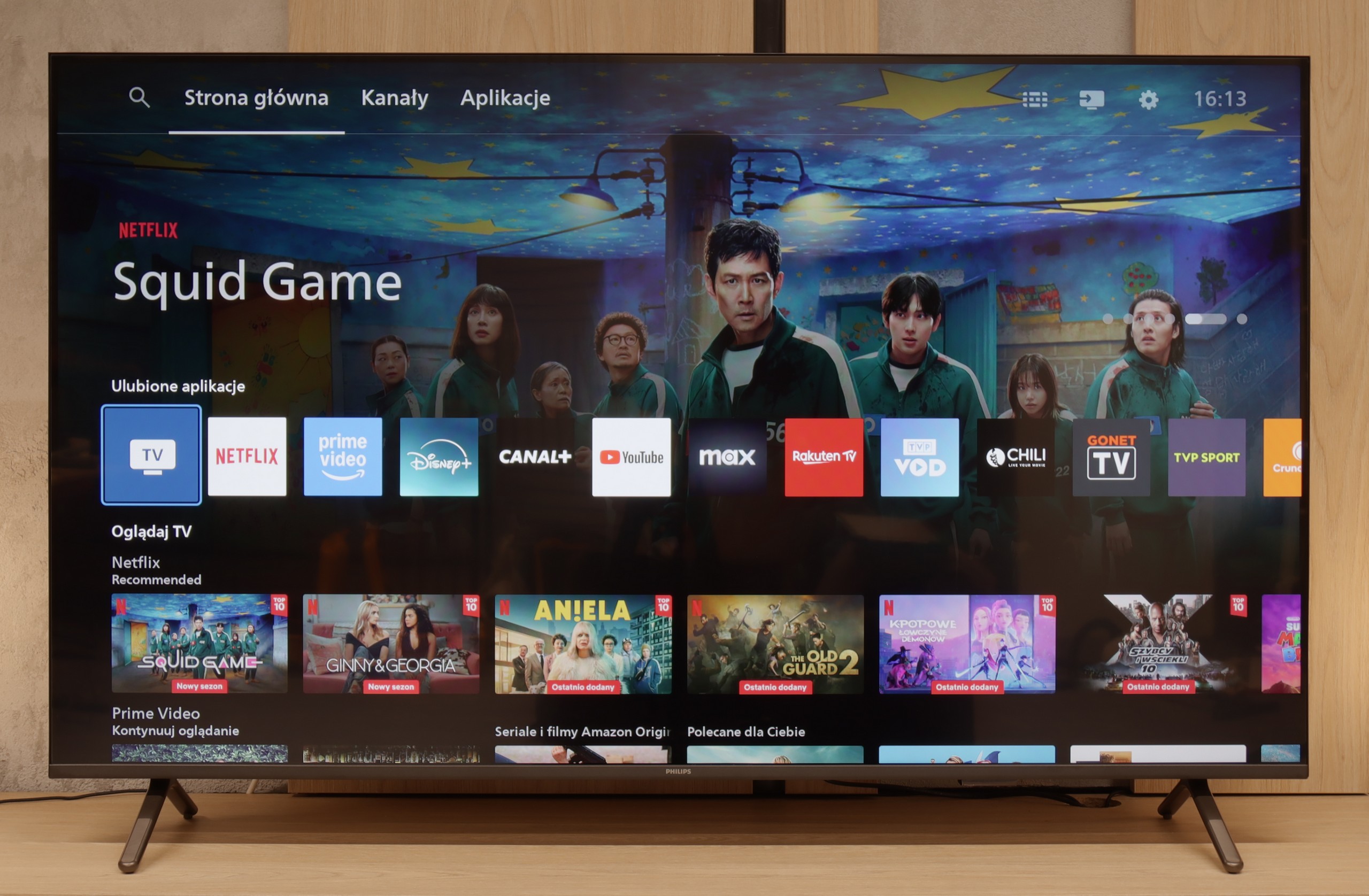
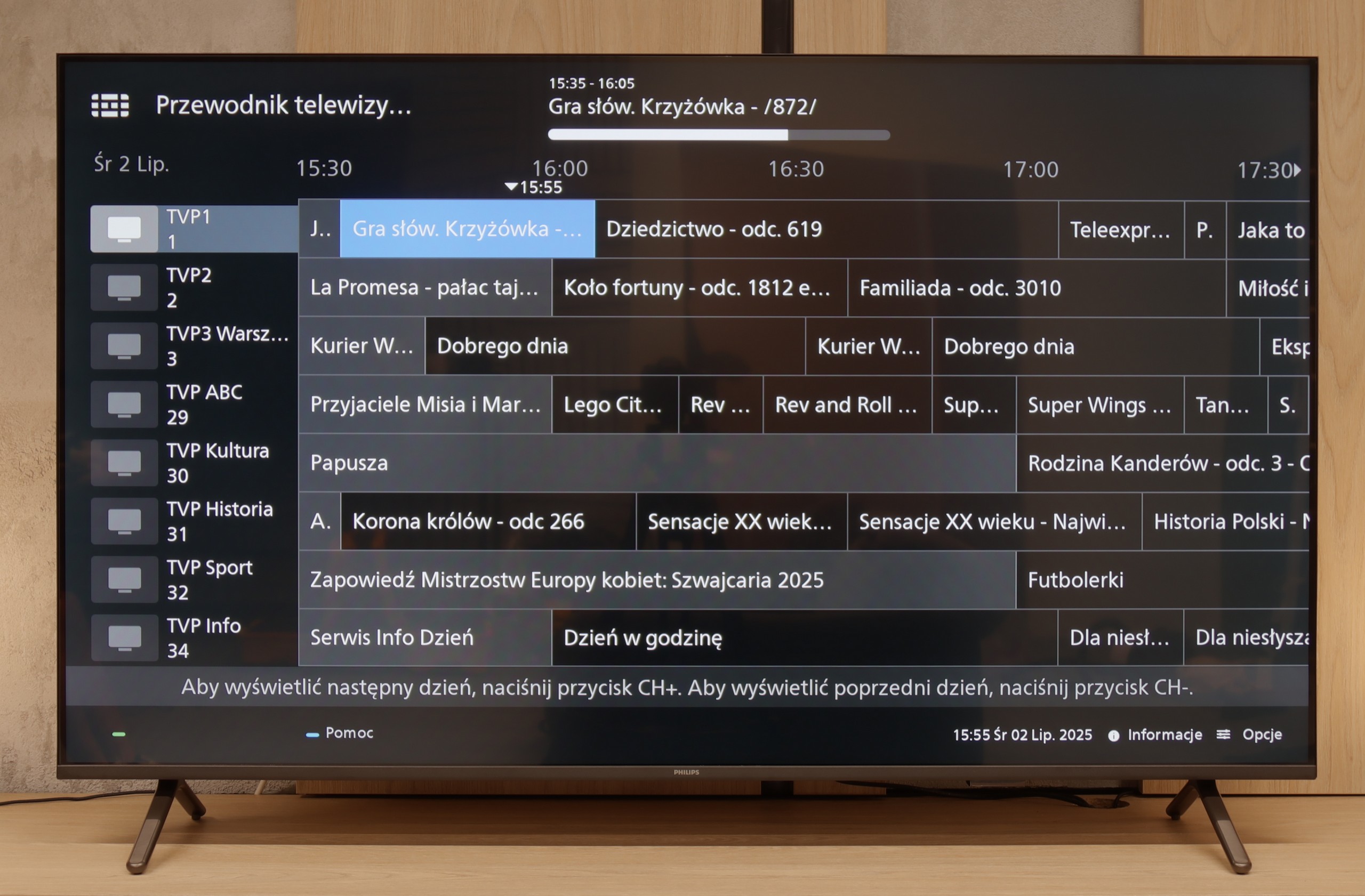
Samsung Q60D runs on the proprietary Tizen operating system, which, although not as open as Google's system and having certain limitations regarding available applications, should satisfy most users. The interface is clear and intuitive, allowing easy access to popular streaming platforms such as Netflix, YouTube, and Prime Video. Users will also appreciate the ability to personalise the home screen, enabling quick jumps to favourite apps and content. However, the lack of recording functionality may be a concern for those who would like to archive their favourite shows or movies for later. On the other hand, a pleasant surprise is the presence of AirPlay functionality, which allows seamless content streaming from Apple devices, such as iPhone or iPad. This means users can easily share photos, videos, and other materials without the need for cables.
Additionally, the television allows the connection of various peripheral devices via Bluetooth, significantly increasing its functionality. Users can take advantage of wireless headphones, soundbars, and other accessories, enhancing comfort during use. The remote control included with the television is slim, elegant, and ergonomic. It is equipped with an internal battery that can be charged via a USB-C port or solar energy, providing a convenient solution that eliminates the need for battery replacements. Moreover, it allows for controlling other devices such as an external NC+ / Canal + decoder.
Furthermore, the SmartThings app for smartphones and iPhone enables the integration of the television with other smart devices in the home. This allows users to remotely control various elements of their home, such as Philips Hue smart lighting, Yeelight, and other products compatible with this system. The Samsung Q60D becomes the central point in a smart home, enabling easy management of daily tasks and entertainment.
Classic TV Features:
If you’re looking for a TV that, in the basic sense, “works” – the PUS8560 will fill that role. In terms of classic features, we have a rather minimalist set. On the plus side, there’s an electronic program guide (EPG), teletext, a backlit remote with a classic numeric keypad, and a headphone jack input. It sounds a bit like a dream set for seniors – and there’s some truth to that. However, it must be said clearly: this is a TV with very limited capabilities. We won’t find USB recording from DVB tuners here, and there’s no Picture-in-Picture mode or other conveniences known from more expensive models.
Smart TV:
How does SmartTV fare on the PUS8560? Well, it gets a bit trickier here. The PUS8560 runs on the Titan OS, which in this particular implementation posed significant issues. Some functions, though present “on paper,” simply didn’t work. For example: Wireless screen mirroring features like Chromecast or Miracast – we tried to activate them with several different phones and laptops… without success. Perhaps this will be fixed in the future, but at the time of testing – it didn’t work. Also, the speed of the system left much to be desired – switching applications or home screens was simply slow. A substantial portion of the functions in the menu seem to be heavily hidden in the depths of a poorly organised system. To make matters worse, the library of available applications is quite limited. Although the situation with apps is better than last year, it’s still far from ideal. A modern remote tries to save the situation – slim, elegant, backlit and really well-made. Unfortunately, it operates on classic infrared, so you have to aim it at the screen. The only exception is voice control, which works via Bluetooth… it’s just a pity it doesn’t support Polish.
Playing files from USB
9/10
8/10
Supported photo formats:
Maximum photo resolution:

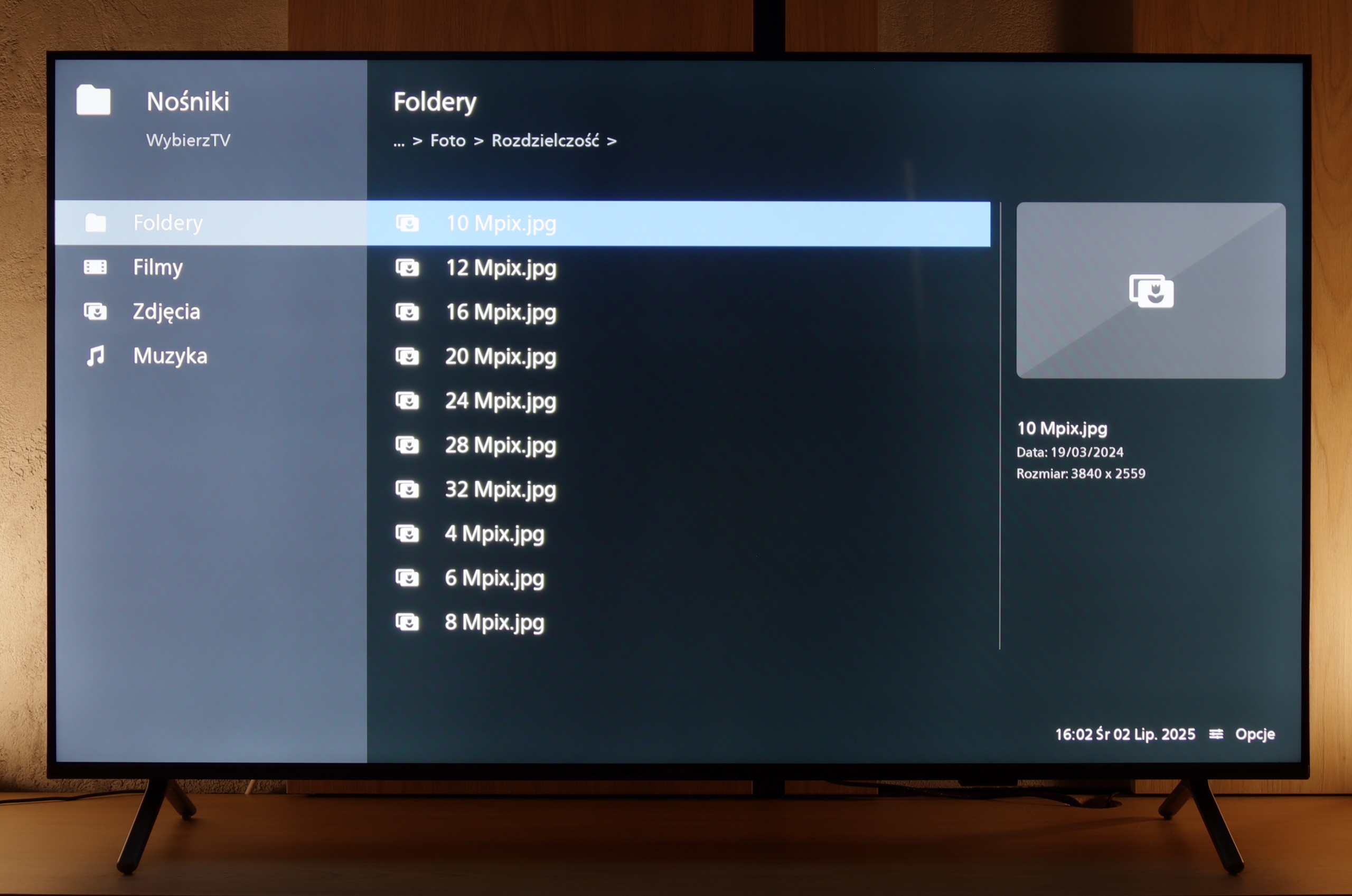
The built-in player in the Samsung Q60D TV is one of its significant advantages. It handles most video and audio files used during testing exceptionally well. The only exceptions are the Dolby Vision format, which is not surprising, and less popular codecs. It’s also worth noting the support for Polish characters and the ability to change font colours, enhancing user comfort.
PUS8560 handles most popular video and audio formats from USB memory without much hassle, so there's no need to elaborate on individual compatibilities. In everyday use, it should just work – and it does. The only thing worth noting is the handling of images. Although the television easily recognises popular extensions, with very high resolution graphic files, there are times when some images simply won't display. It might not be a major issue, but it's good to keep it in mind, especially if we want to view photographs straight from the camera. Besides that, PUS8560 shouldn't have any major problems playing files from USB.
Apps
8.7/10
4.6/10














































Sound
6.2/10
6.2/10
- Subjective sound quality:6.2/106.2/10
- Dolby Digital Plus 7.1:
- Dolby True HD 7.1:
- Dolby Atmos in Dolby Digital Plus (JOC):
- Dolby Atmos in Dolby True HD:
- DTS:X in DTS-HD MA:
- DTS-HD Master Audio:
When it comes to sound, due to the slim design of the Samsung Q60D TV, the audio quality is at an acceptable level, although it doesn’t stand out in any particular way. A positive aspect is the soundbar synchronisation feature thanks to Q-Symphony technology, which allows for a better audio experience. Unfortunately, in terms of audio codec support, there is a significant issue – the TV does not support the DTS format.
The television sounds quite pleasant, and it can confidently be said that the audio level will be fully adequate for most users – for both watching daily programs and enjoying an evening binge of a series. Moreover, it's a nice surprise that even in such an affordable Philips series, they decided to acquire licenses for full audio formats such as Dolby Atmos and DTS. This is great news for home theatre and soundbar owners, as it means complete compatibility and no need to "fiddle around" with connecting external devices.


